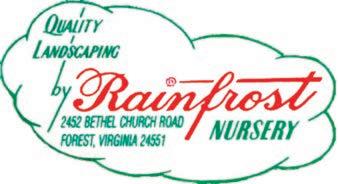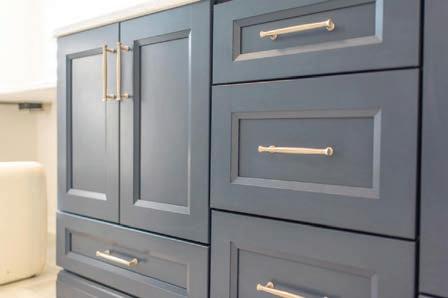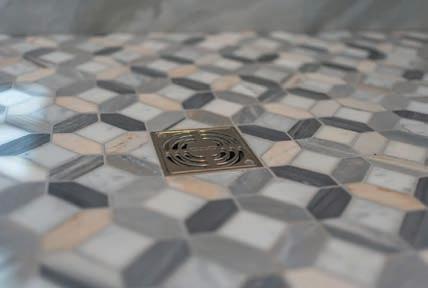




DoorTek is a local, family-owned company bringing you the newest technologies in garage door solutions and exceptional customer service. Our one-of-a-kind products are backed by the best warranties in the area. Call us today for all of your garage door solutions!
• Custom-fit parts & products—the most durable & reliable in the industry!
• Comprehensive maintenance & extended warranties
• Upfront pricing guaranteed
• Lifetime parts warranty
• The friendliest technicians around—warm personalities bringing robotic precision & craftsmanship!
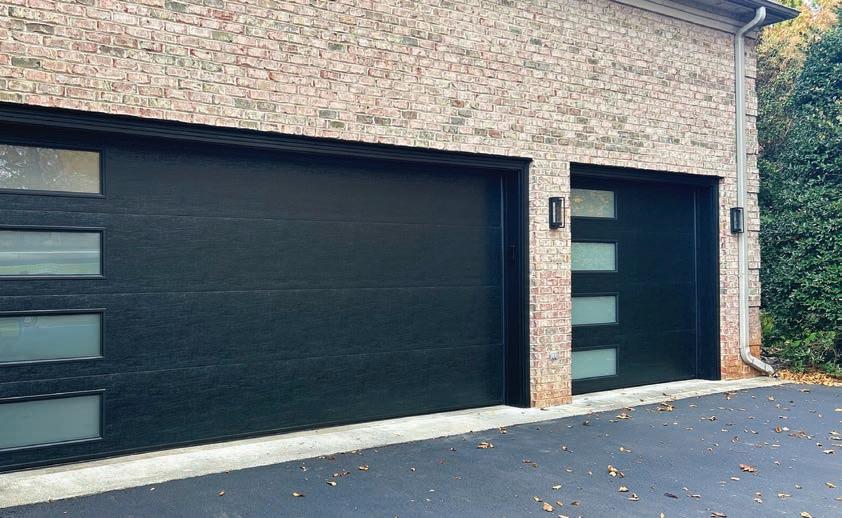










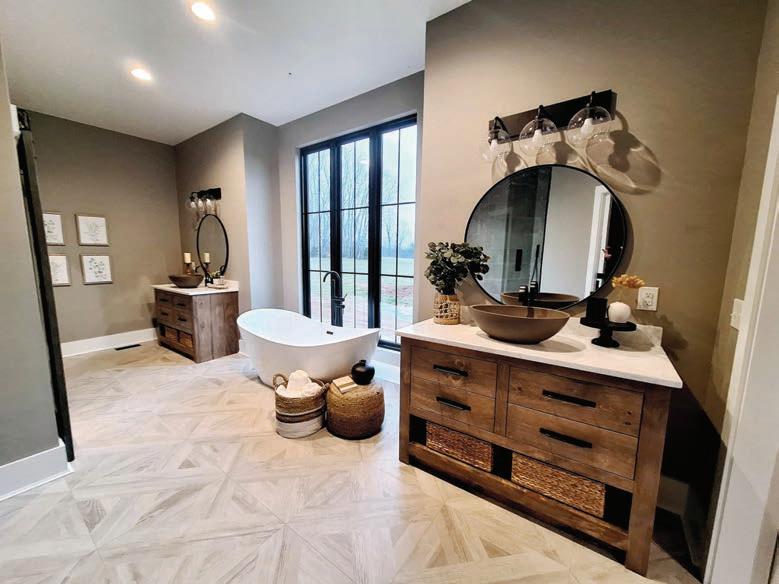





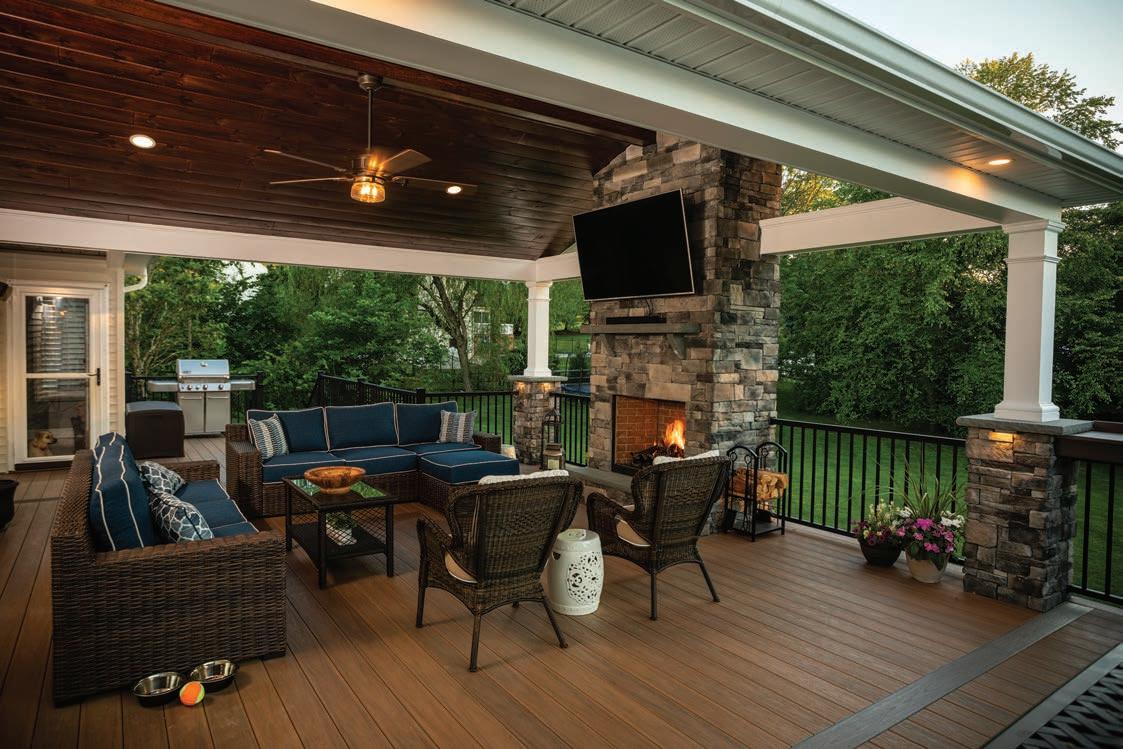

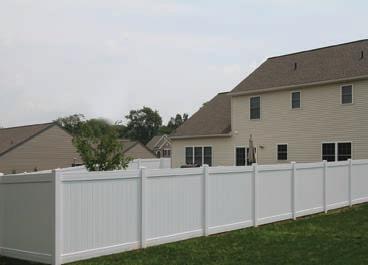

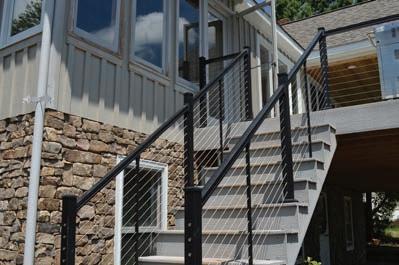












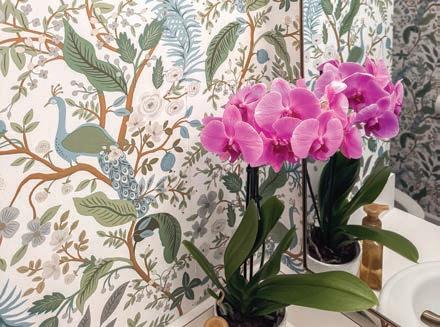
















































She’s very knowledgeable of the local area and knows the ins and outs of home buying.She worked hard to get our offer just right for the sellers in a seller’s market.Once under contract,Nadine kept track of everything and made sure it was moving along.
We were even able to close early! I highly recommend Nadine when buying a house!
R. Middleton, BUYER CLIENT Nadine was great to work with.
I highly recommend Nadine for all your
I can’t say enough good things about Nadine!
We are thrilled with our new home and grateful to Nadine for making it happen! Her professionalism and expertise are unmatched. She helped us navigate through the competitive Lynchburg,VA real estate market and made the home buying process a breeze.Nadine was incredibly patient and took the time to show us numerous properties until we found the one that felt right.Her responsiveness and clear communication made us feel well-informed and supported every step of the way.
Maria I., BUYER CLIENT
estate needs.
She helped our family sell our first home and made sure our house was ready to go on the market. Nadine helped us every step of the way as it was a new process for us.She communicated with us right away and answered all of our questions.Nadine made sure to get us top dollar for our house and then helped us as we hunted for a new house and through her connections it was a house that wasn’t even on the market!
We are so thankful for Nadine and for all of her help with both buying and selling our homes.









any
Great communication throughout the whole process.
Nadine is a true Southern delight.
We enjoyed working with her and knew our interests were always her first priority. She is knowledgeable about Lynchburg and surrounding counties,while being an advocate for properties she is selling.

By the time you hold this in your hands, I hope to be in Georgia watching my son graduate from Army Advanced Individual Training (AIT) and celebrating my daughter’s 19th birthday, as she nears the end of her first year of college. This past year has brought so many changes for our family — both wonderful and hard — including losing my father after a long journey with Parkinson’s Disease.
Spring reminds me that with each new season, there is new life and new hope. And more things to store away!
My basement is now filled with totes of things my son needs to store while he’s in the Army. We’ll soon have more containers filled with items from a college dorm (bring on those XL twin sheets!). I’ve also been collecting many mementos from my father’s life. Each time I’m at my mother’s house, she has another little bag of sweet memories — a wellworn hat, a Member’s Only jacket, a Parent’s Weekend Guide from the 1990s.
We all face the dilemma: what to keep and what to let go. I appreciate Laurel’s article on where and how to donate to local organizations that benefit our community. That’s a real win-win as we spring clean.
Making better use of our closets is another solution. Kate talks to local experts on how to make the most of these spaces.
When you have finished your spring reorganization, you might be ready for a refresh. Check out Martha’s article for

some simple — and more robust ideas! You might like to start with a mood board. Or by checking out the latest wallpaper trends. If you’ve had enough of cleaning and decluttering, get out of the house, and go pick some strawberries! Or go on the Historic Garden Week Tour in
Lynchburg. Plant some early bloomers in your yard.
Also, don’t miss our showcase home: The owners have imbued their home with faith, hope and love. They’ve evolved an Airbnb rental into a gracious space that exudes hospitality. Make the most of this beautiful season. While change doesn’t stop, you can certainly stop and smell the hyacinths along the way!
Donna Dunn | donna@jamesrivermedia.com

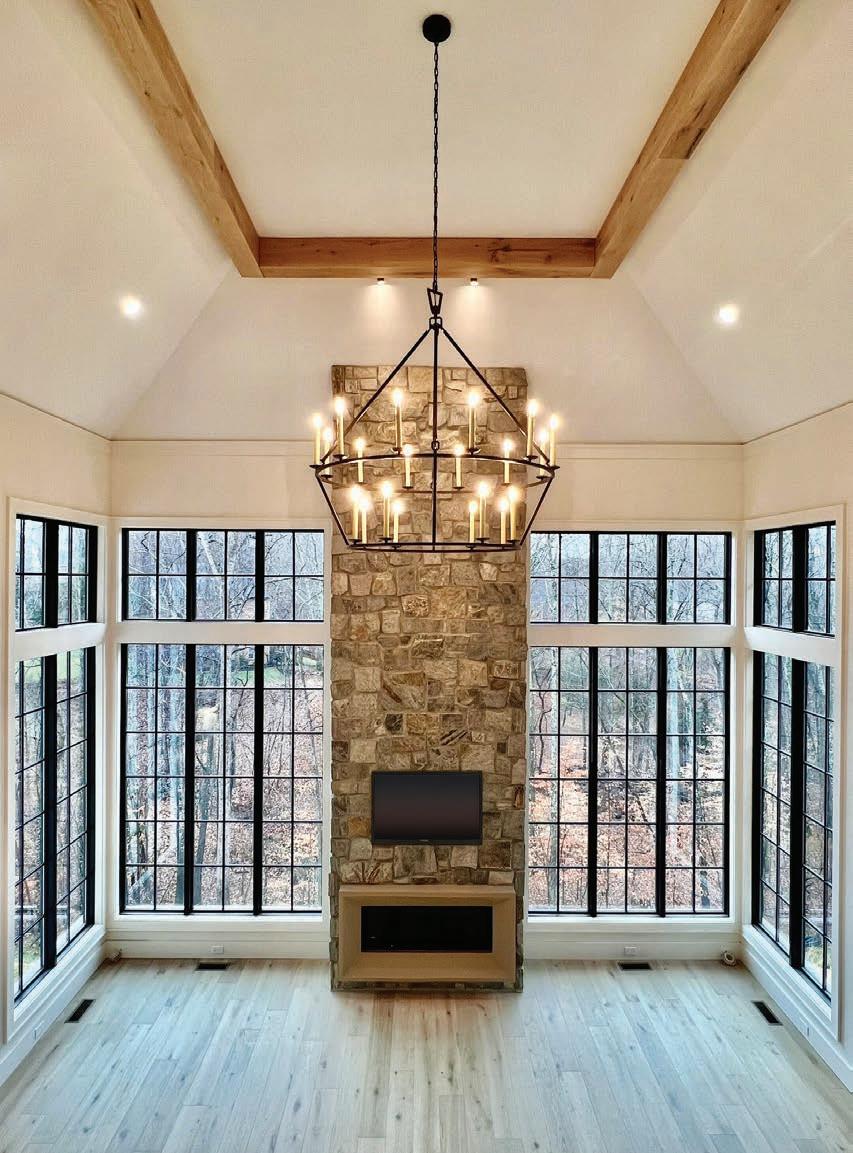

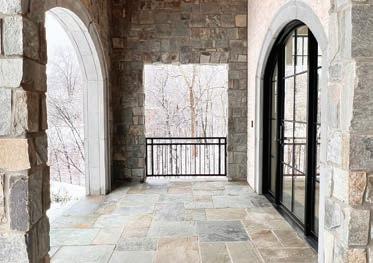



VOLUME 1 9 ISSUE 2
PUBLISHER
Trish Roth
EDITOR
Donna Dunn
ART DIRECTOR
Kira Rider
CONTRIBUTING WRITERS
Carter Heald Bendall
Mitzi Bible
Becky Calvert
Paula Peters Chambers
Martha S. Coffey
Kate Ericsson
Laurel Feinman
Jerry Hale
Margie Lippard
Kendall Atkins Livick
Christina Moore
Ashley Blair Smith
Ginny Smith
Ryan Tipps
PHOTOGRAPHER
Michael Patch
GRAPHIC DESIGNER
Donna Collins
SALES DIRECTOR
John Mazzei
ADVERTISING SALES
Kirsten Morey Becker
Lisa Bowers
Reid Ebert
Stephanie Ragsdale
Kenny Shelton
SUBSCRIPTIONS
Central Virginia HOME is published five times annually by James River Media, LLC. For an annual subscription, please send $20 and your name, address and telephone number to: Central Virginia HOME 109B Tradewynd Drive, Lynchburg, VA 24502
For advertising information please call (434) 845-5463 or email sales@jamesrivermedia.com
To discuss coverage of an event relating to home or garden, please contact Central Virginia HOME at home@jamesrivermedia.com
JAMES RIVER MEDIA, LLC (434) 845-5463
Copyright 2025 by James River Media, LLC. All rights reserved. No part of this publication may be reproduced or transmitted in any form or by any means without written permission from James River Media, LLC. All pictorial material reproduced in this magazine, whether in a produced ad or by itself, has been accepted on the condition that it is with the knowledge and prior consent of the photographer or the artist concerned. As such, James River Media, LLC is not responsible for any infringement of copyright or otherwise arising out of publication thereof. The information contained herein has been obtained from sources believed to be reliable. However, James River Media, LLC makes no warrant to the accuracy or reliability of this information. Opinions expressed in this magazine are those of the authors and do not necessarily reflect the opinions of ownership or management.




Purchasing a home can be intimidating for first-time buyers, but you don't have to do it alone. Our team of experts is on your side from contract to closing and beyond. We'll help you secure the financing you need, so that you can focus on making yourself at home. CHOOSE A TEAM YOU CAN

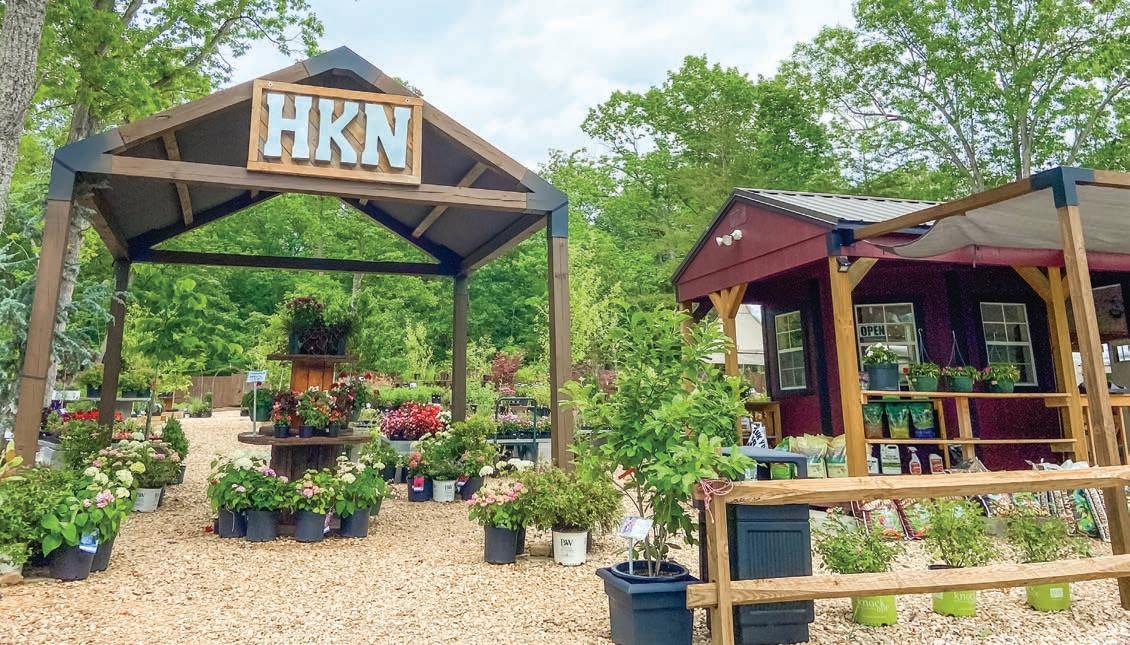


BY GINNY SMITH




Areminder of nature’s resilience, early bloomers break through the cold bleakness of the winter months to celebrate the welcome arrival of spring. With pops of color, early-season flowers, shrubs and trees provide the hope of warm weather and blue skies. Colorful blooms promise that days spent outside in the fresh air are just around the corner.
Two of the earliest bloomers in Central Virginia are snowdrops and crocuses. You may have seen snowdrops with their white petals hanging down from the stems as early as January and February. They grow well in partially shaded areas and return each year. Likewise, crocuses — members of the iris family — popped their way through the snow and frost in late February or early March. With a sweet fragrance, the blooms on these small flowering perennials last about three weeks. Fortunately, crocuses are usually safe from the ravages of deer.
Bloodroot revealed itself in late February/early March. Found mainly in woodland settings, this white flower has gold stamens and reddish sap in its roots. A shady environment is perfect for this native wildflower.
Lenten roses are evergreen perennials that bloom in late winter and early spring. They can even tolerate a late-season snow. Perfect for yards and gardens, Lenten roses self-seed, so they can spread out to fill an area. Clumps of the roses can be divided after the spring blooms fall. They grow best in indirect sunlight but can tolerate limited amounts of sun.

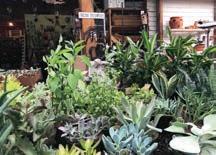




As winter wanes, the range of bloomers expand. Little dots of color and fragrance remind us that spring is just around the corner.
Forsythia, a shrub known for its vibrant yellow flowers, blooms in the spring before the leaves appear on the trees. Easy to care for, forsythia grows well in the shade and in the sun. The best time to prune this eye-catching shrub is just after the flowers drop.
You probably noticed tulips, daffodils and hyacinths showing off their vibrant colors in late March. Easy to grow, tulips are found in many colors and sizes. The charming, cupshaped flowers simply need full sun and well-drained soil.


Daffodils, known for their bright yellow, white or orange blooms, also prefer full sun and well-drained soil. These beautiful flowers have a peak season of early March to early May. Deer usually avoid daffodils and other flowers with strong scents.
Hyacinths are perennials that prefer full sun. Purple, pink and white blooms each have their own unique scent. A healthy hyacinth flourishes in full sun. Deadheading, removing the spent blooms, enables the plant to continue growing.
Native to Virginia, the bluebell or cowslip, blooms for about three to four weeks in March or April. Amazingly easy to grow, bluebells are shade-loving flowers that spread out quickly. Late summer pruning encourages healthier growth.
A sure sign that spring is approaching: the redbud trees begin to bloom. With bright pink flowers nestled on the branches, redbuds are a wondrous sight as we move from the dull landscape of winter to the glorious colors of spring.




Spring has sprung!
Now that spring has arrived, we see a full spectrum of blossoms.
Snapdragons are early spring flowers known as hardy annuals. Easy to grow from seeds, snapdragons mature quickly. Averaging from 6 inches to 4 feet, snapdragons are perfect for cutting flowers. They do well in full sun. Bumblebees and hummingbirds love snapdragons!
Cherry blossoms usually bloom the last week of March or the first week of April, depending on the weather. Usually, three to four days after the peak bloom, these trees will quickly drop their petals, and green leaves will appear. The National Cherry Blossom Festival in Washington, D.C., will take place through April 13. This citywide celebration commemorates the 1912 gift of 3,000 cherry blossom trees from Japan.
Bleeding hearts look best in late spring and early summer. Named for their heart-shaped blooms, bleeding hearts flower for 4 to 6 weeks in late spring. Most perform best in partial
shade. These flowers are self-seeding, so they spread nicely as a border or edging but are not overly aggressive.
Pansies are cheerful flowers that are fast-growing and can spread out nicely. With a little bit of work, pansies can make a show all summer long. Deadheading is important with pansies, so regularly pinch off the spent blooms to encourage more growth. Pansies are perfect in large pots or as edging.
Violets are similar but somewhat smaller than pansies. They, too, bloom abundantly and can continue to bloom through the summer. Violets come in a wide range of colors in combinations of blue, purple, yellow and white.
As winter fades into spring, the emergence of early bloomers to usher in the warm weather is a reminder of the resilience of nature and of our own resilience. As we celebrate the change of seasons, the warmth and beauty of spring unfolds and opens our eyes to a glorious new time of year. ✦
Congratulations to Hoskins Letchworth Wealth Management for being named to the Forbes “Best-in-State Wealth Management Teams” 2025 list, published on January 9, 2025. Rankings based on data as of March 31, 2024.

Hoskins Letchworth Wealth Management
Merrill Lynch Wealth Management 1705 Enterprise Drive Lynchburg, VA 24502
434.485.8285
2025 Forbes “Best-in-State Wealth Management Teams” list. Opinions provided by SHOOK® Research, LLC and are based on in-person, virtual and telephone due-diligence meetings and a ranking algorithm that measure best practices, client retention, industry experience, credentials, compliance records, firm nominations, assets under management and Firm-generated revenue (investment performance is not a criterion because client objectives and risk tolerance vary). SHOOK’s rankings are available for client evaluation only, are not indicative of future performance and do not represent any one client’s experience and available for investor help in evaluating the right financial advisor and not an endorsement of the advisor. Compensation was not received from anyone for the rankings study. Past performance does not guarantee future results. Details available at the SHOOK Research website. SHOOK is a registered trademark of SHOOK Research, LLC. Merrill Lynch, Pierce, Fenner & Smith Incorporated (MLPF&S) is a registered broker-dealer, registered investment adviser, and Member SIPC. Bank of America, N.A., Member FDIC and MLPF&S are wholly owned subsidiaries of Bank of America Corporation. © 2025 Bank of America Corporation. All rights reserved. MAP5911614 | AD-03-25-0014 | 472538PM-0124 | 03/2025

BY MARGIE LIPPARD
With a storied history spanning centuries, wallpaper is experiencing a renaissance in interior design. Even the avante garde Rhode Island School of Design Museum has mounted a 2025 spring exhibition entitled “The Art of French Wallpaper Design.” The collection showcases more than 100 pieces of antique French wallpaper made by wood-block printing, a craft perfected by William Morris, the prolific 19th century English designer.
Morris’ renowned botanical and floral patterns inform today’s innovative American designers and manufacturers like Schumacher, Thibaut and York. What to expect from these trendsetters in 2025? Look for gorgeous wallpaper that boasts inviting textures, sustainable materials, bold colors and patterns and sweeping murals, often placed in surprising spaces. Whether traditional or peel-and-stick, wallpaper transforms rooms into ravishing works of art.










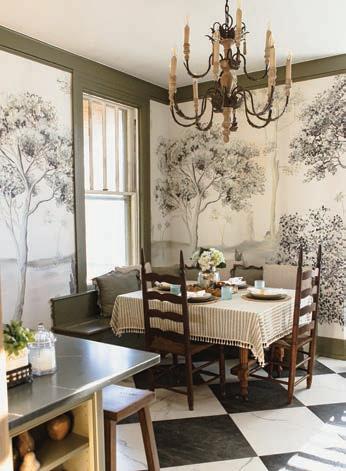
Though a timeless classic, wallpaper is making a comeback in the decorative arts. Sarah Girten, an interior designer and owner of Girten-Saunders Interior Design, was named a top Virginia designer by Architectural Digest. Her husband Kevin Saunders, a professional wallpaper installer, recently had his work featured in Better Homes & Gardens. Together, they believe wallpaper is a mainstay that has the unique power to transform a room. Saunders notes, “It’s always been popular. Wallpaper brings a space to life unlike any paint. I’ve done so many jobs where I’ve taken a dated wallpaper down and put up new elegant wallpaper, and it’s like ‘Wow!’ The customer is thrilled.” If installed properly, quality wallpaper can last 15 years or more and won’t require much maintenance. Saunders adds, “It prevents you from having to touch up like paint, and it lasts longer.”
When collaborating with customers, Girten orders wallpaper swatches from her favorite vendors like Cole & Son, Kravet, Schumacher, Thibaut and York. She first sees her clients’ rooms and learns their aesthetic to create a curated proposal. “After seeing their space and knowing what their style is, I’ll bring them the appropriate samples,” she says. “It’s a curated feeling. I like my clients to create a space around what they love. You’ll have a cohesive space that will never go out of style.”



Wallpaper on accent walls, ceilings and other unexpected places makes an impactful decorative statement, yet it’s also cost-effective since you’re not covering up all the walls. Wallpaper with bold colors and patterns shine on accent walls, especially in the bedroom behind the headboard, but ceilings are beckoning as the “fifth” wall. Saunders notes, “Wallpaper on accent walls is still popular, but it has slowed down a bit. Ceilings are becoming the new accent wall.”
For Girten, the ceiling is a perfect canvas for palettes and patterns with panache. She explains, “Wallpaper on the ceiling is in bolder patterns. Color is making a big comeback. Stripes are making a big comeback, but it’s not your grandmother’s stripe. It’s a big chunky stripe. A big geometric for the ceiling can nicely complement grasscloth on the walls.” In contrast, for nurseries and children’s bedrooms, whimsical patterns in soft pastels will charm your young ones and soothe them to sleep.
Wallpaper made from natural materials such as grasscloth, raffia and silk is an elegant classic. Grasscloth wallpaper has tonal nuances that instantly bring texture and warmth into a space. Girten explains, “It never goes out of style and feels elegant. Part of its appeal is that it is a woven material, so each seam is different. People love it because it is a natural material.” Though it’s a sophisticated backdrop to living rooms, dining rooms and bedrooms, textured wallpaper isn’t a candidate for rooms with high humidity like bathrooms or the laundry room.
Wallpaper made of natural materials and non-toxic wallpaper inks are surging in popularity. Designers are seeking inventive ways to create beautiful wallpaper that sparks a feeling of well-being and enhances the environment. Biophilic wallpaper patterns like flora and fauna, which invite nature into the home, suffuse this style.
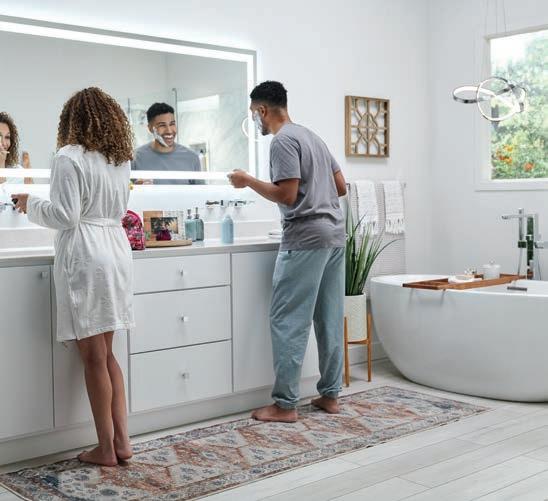


Re-Bath offers complete remodels, not just cover ups. Our team will work with you through design, product selection, demo, and installation to create a bathroom you’ll love.
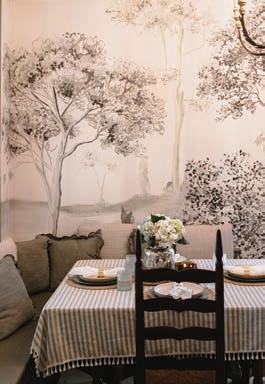

Bright colors, new neutrals and bold patterns are hot in wallpaper design. Girten elaborates, “Color is back. We’re seeing a lot more blues, greens, even pops of red in wallpaper patterns. Sage green and blue greens are very light, soothing colors, which are becoming the new neutrals.” Exuberant wallpaper patterns — large-scale florals and botanicals; dramatic geometrics, stripes and abstracts; exotic animal and tropical prints; and scenic landscapes — reflect maximalism’s aesthetic of abundance in interior design. And you can transform a powder room into a vibrant jewel at little cost. Girten explains, “Bold colors and patterns work well, especially in a powder room or small space. It’s a less expensive way to add a bold statement to the room.”




Unlike wallpaper with repeating patterns, murals wrap rooms with a continuous wallcovering that paints a picture and tells a story. Girten says, “I think wall murals are popular. It comes as wallpaper, but it is a bigger scale version of it and paints a picture. These are lovely for a big accent wall because they make a big splash.” Scenic chinoiserie landscape patterns and trompe l’œil designs elevate the ambiance of living rooms, dining room, bedrooms and foyers. While digital printing makes murals more accessible, most designers recommend professional installation because they are so intricate.


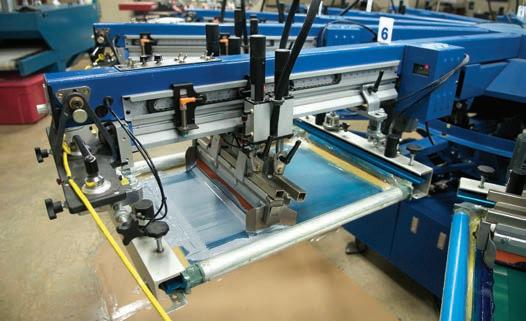
Wallpaper construction, installation & care Innovations in technology and design have introduced wallpaper options that appeal to professional and amateur installers alike. Whether traditional or removable, wallpaper construction follows these basic steps:
n Select a backing, which can be woven (fabric based) or non-woven (paper)
n Apply a colored background coating (latex for fabric, vinyl for paper) to the backing
n Imprint the pattern and ink through surface, gravure, digital or silk screen printing. The wallpaper then can be pre-pasted, dried and rolled.

434.238.8675

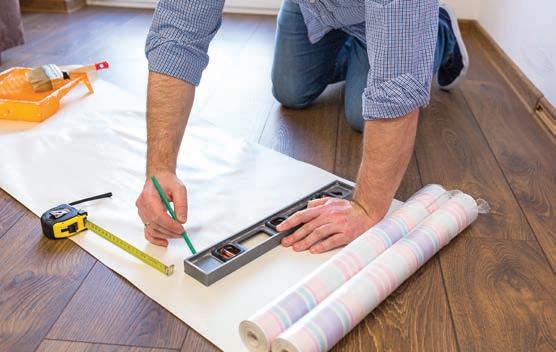


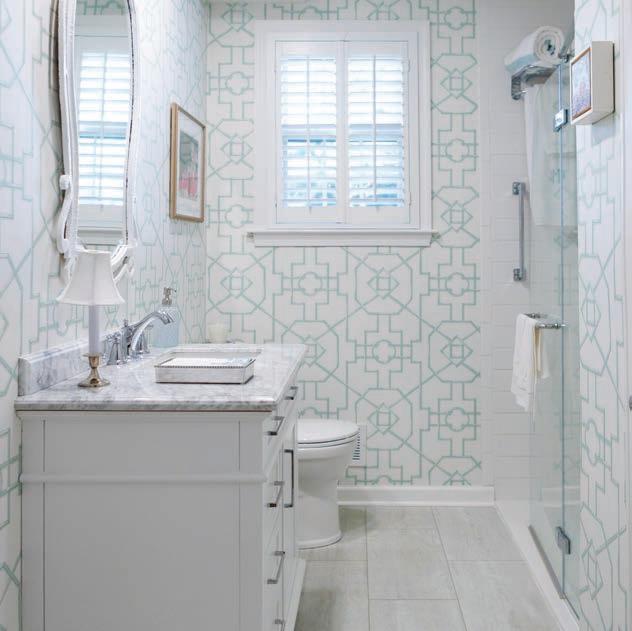
Installation starts with deciding how many rolls of wallpaper you’ll need. A single roll is 25-35 square feet while a double roll is 57-61 square feet. To calculate the quantity of wallpaper rolls required for a room:
n Measure the height and width of each wall, including the doors and windows. You’ll need that to match up patterns.
n Divide the total area square footage by the square footage of one roll.
n Be sure to add an allowance for errors, repairs and extra coverage.
n Consider the pattern, as that may require some extra wallpaper to make sure everything lines up.
Priming the surface and preparing the wallpaper are critical to a successful installation. Saunders emphasizes, “The most important thing about wallpaper installing is putting the right primer on the walls.” Once you’ve cleaned and primed the surface, prepare your wallpaper by “booking” or folding it after pasting and before it is hung. “Booking” helps avoid bubbles and creases during installation. Of course, peel-and-stick wallpaper does not require this step.
Wallpaper that is not pre-pasted will require a separate adhesive. Traditional wallpaper installation might be best done by a professional, unless you have experience in this area.
If your wallpaper has reached its lifespan or is showing flaws, installers don’t recommend repapering or repainting it — unless it’s grasscloth. Saunders explains, “It’s not particularly recommended to paint over existing wallpaper. It’s rare that you put up a product on existing wallpaper. An exception is grasscloth which people can paint over after using an oil-based primer.”
As the RISD Museum exhibit reminds us, wallpaper has an illustrious past, but its reign in the decorative arts flourishes today. A timeless treasure, wallpaper still makes rooms come to life. ✦





In the heart of Lynchburg, Virginia, a beacon of dining excellence has been relit, as The Crown’s Ember gracefully combines nostalgic elegance with contemporary gastronomy. The establishment is a re-envisioning of the beloved Crown Sterling, a name synonymous with celebrations and special occasions since its inception in 1970. Known as the quintessential setting for birthdays, business dinners, anniversaries and more, The Crown Sterling was a landmark until it closed in 2021.
In 2022, Chris England, an entrepreneur with a vision for revival, purchased the property. His mission was clear: to rejuvenate, revitalize and rebrand the cherished eatery while retaining its soul. The new name, The Crown’s Ember,
poetically symbolizes an ember of charcoal still glowing from the original Crown, a nod to the enduring spirit of the restaurant.
Upon entering The Crown’s Ember, guests are enveloped in the Legacy Lounge, where walls adorned with photographs of past patrons and staff pay homage to the storied past. The interior retains elements of the old Crown, including exposed brickwork and an original wine cabinet that whispers tales of yesteryears. Central to the restaurant, both physically and spiritually, is the iconic charcoal grill — preserved and reconstructed; it continues to impart a distinctive char to each dish that passes over its grate.





The remodel, though extensive, has been mindful to preserve the essence of the original space. The salad bar and the grill, both rebuilt, occupy their historical positions, visible from the dining room and reminding patrons of the restaurant’s legacy. At The Crown’s Ember, the culinary philosophy is uncompromising, focusing on the finest cuts of Certified Angus beef, aged in-house to perfection.
Chris England’s dedication to quality is evident in every plate served. “We wanted to ensure that people could still say they were going out to ‘The Crown’ for dinner,” he notes, “but also introduce a fresh identity that would resonate with the next generation of diners.”
The Crown’s Ember is not just a restaurant; it’s a bridge between past and present, an inviting place where old friends and new can gather to celebrate life’s moments over meals that are both memorable and exquisitely crafted.
As Lynchburg continues to evolve, The Crown’s Ember stands as a testament to the power of heritage fused with innovation — a place where every meal is a memory, and every visitor is treated to a taste of history renewed. Join us, and reignite your passion for fine dining, where tradition and flair meet to create unforgettable experiences.





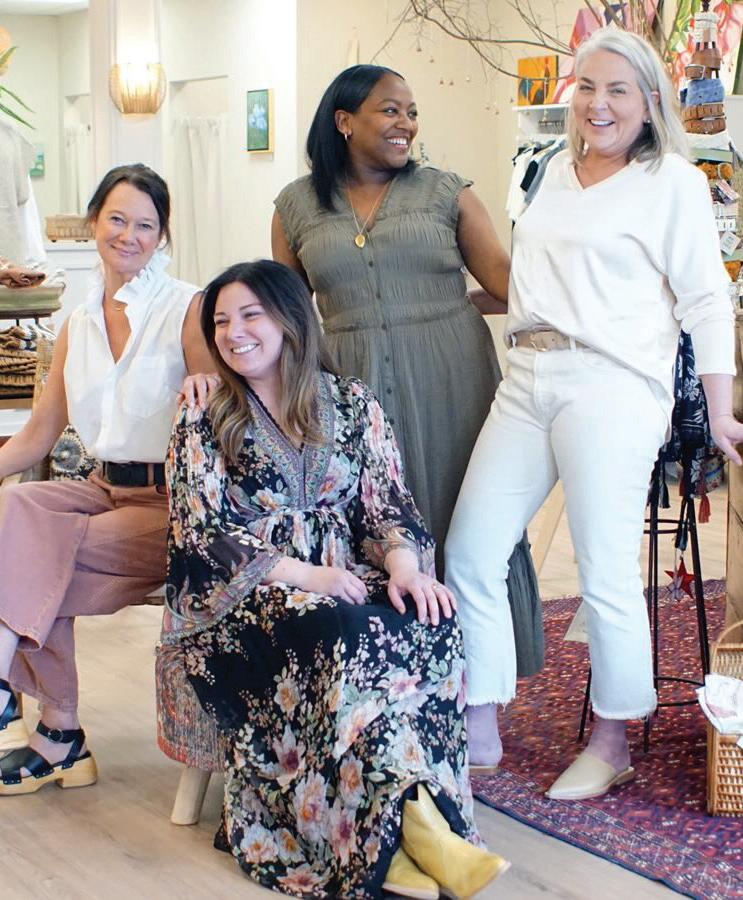








budget-friendly



BY KENDALL ATKINS LIVICK
What could be more gratifying than transforming a room in your house to match a beautiful vision in your mind’s eye? How about saving money while you’re at it? Budget-friendly design sourcing is a clever way to elevate your style on a dime.
A handy acronym (SHOP) trains the memory to embrace strategic saving tips. First things first:
n Create a vision or mood board on Pinterest or another chosen platform. Fill it with images that wow and delight your senses. See how to create a mood board on page 64.
n Make a master wish list.
n Finally, remember to SHOP to save.
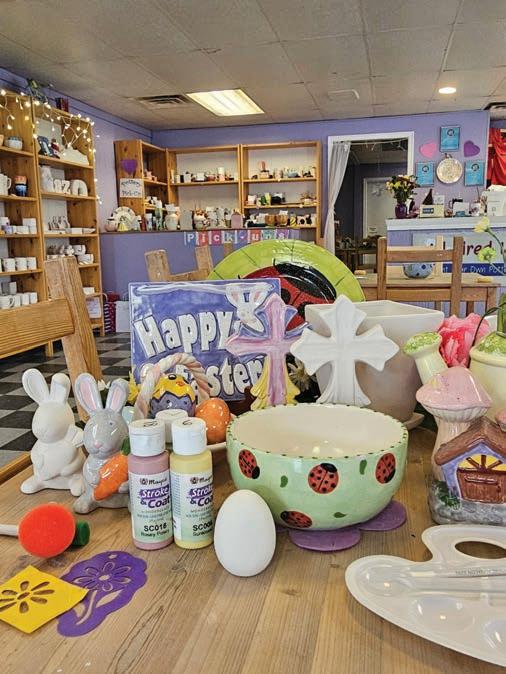


While some may brag about how much money they spend, frugal folks brag about how much they save! If you are in the latter camp, then you’re probably already a pro at money-saving hacks like shopping the sales, clipping coupons, sleuthing out treasures in discount and outlet stores and leveraging loyalty memberships.
But how can you be sure you’re getting more bang for your buck? With a little research, you can gain confidence in your bargains.
On a quarterly basis, it pays off to go on a browsing trip to your favorite home stores. Walk the aisles of various categories, snap a few pictures on your phone and make note of price ranges. Then when you find something on your wish list for significantly less, you’ll know you’re getting a deal.

Expert tip: The best bargains can be found once the ship has sailed. Just as half-priced flowers are on sale the day after Valentine’s Day, the time to buy patio furniture is when there’s a chill in the air. When demand is low, so are prices. During your quarterly browsing sessions, you might also want to check out the front clearance section of some of the big box stores and make your rounds to the local dollar stores. You’ll be surprised what you can snag in terms of knickknacks and accessories at the forefront of what’s trending.

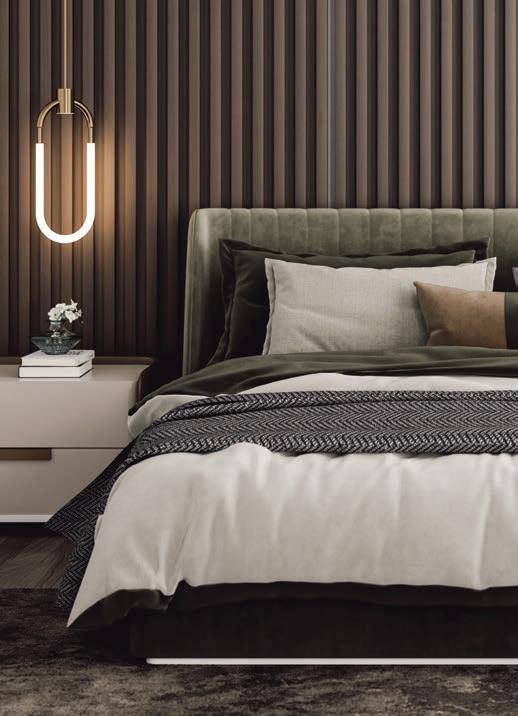

Although seemingly the opposite of stretching a dollar, sometimes you have to spend money to save money. For example, when elevating your bedroom, you could opt for a trendy, yet inexpensive bedframe on Wayfair and head to a mattress clearance sale for the lowest possible price. Yet, a typical mattress has at least a 10-year lifespan. Your bedding setup affects your sleep quality, posture, health and daily energy. On the other hand, a little research can identify the finest organic mattress, free of toxic flame retardants, with the highest ratings for comfort. Add the support of a sturdy wooden frame, and you’ve got yourself a timeless choice to lengthen the product’s lifespan and support your vitality. You can’t put a price on that!
Expert tip: Investing rather than skimping in lifestyle support categories results in big savings over longer durations. Examples of prudent home investments are mattresses and bedframes, kitchen and bathroom renovations, dining furniture and cookware.
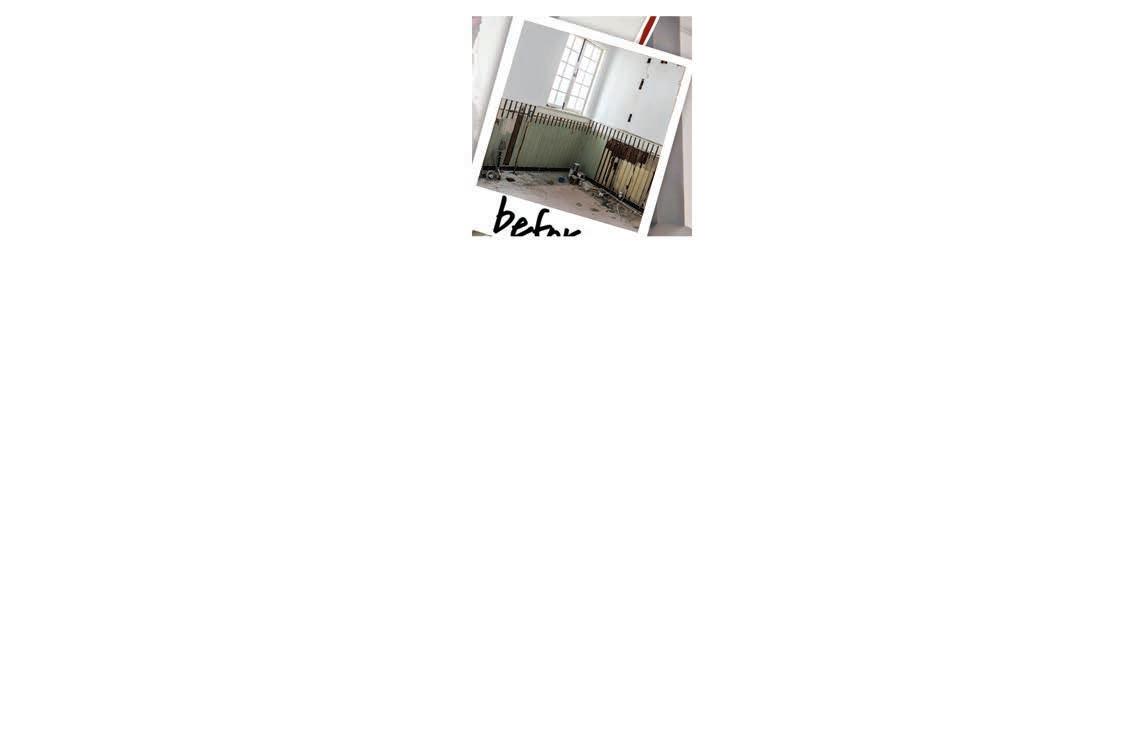
Honing your observation skills will boost your ability to notice fluctuating numbers.
Expert tip: Fill your Amazon/Walmart/ Wayfair, etc. cart with your chosen items, and simply wait for them to come down in price. Check back once a week or so, and when you see a significant markdown, put in your order.
Whoever said new décor items need be brand-spanking new? Vintage and antique finds are one of the top trends right now, and for good reason. Aged items touch upon that previously mentioned timeless element. As a bonus, secondhand shopping emphasizes frugality and sustainability.
With your aesthetic in mind, your ultimate selections will come down to what you find in thrift stores, secondhand shops, estate sales, vintage markets, salvage yards and on Facebook Marketplace.
Expert tip: When it comes to deals on Facebook Marketplace, the early bird catches the worm. If you’ve been eyeing something specific, and you see a deal, the earlier in the day you can contact the seller, the better.
Bonus expert tip: Note red flags on Facebook Marketplace if:
n You see the exact same image listed by more than one account in your local area.
n The seller has a brand new account with no reviews or bad reviews.
n The seller asks for a “deposit” or full payment up front.
You don’t want to get scammed when trying to save!
Perusing used items can yield items specifically desired, as well as novelty discoveries. Salvage yards, for instance, offer unique light fixtures and rustic art installations previously used in commercial spaces. Talk about the thrill of the hunt!
Used items can sometimes require some TLC. By upcycling or adding your creative touch in the form of fresh paint, new cushions, patchwork fixes or elbow grease in the cleaning process, you become part of an artifact’s story.
Letter by letter, the SHOP technique, can elevate your style in a variety of budget-friendly ways. It’s all about patience and clever ingenuity. Now all that’s left to do is to pick a room, and take that first step toward transformation! ✦



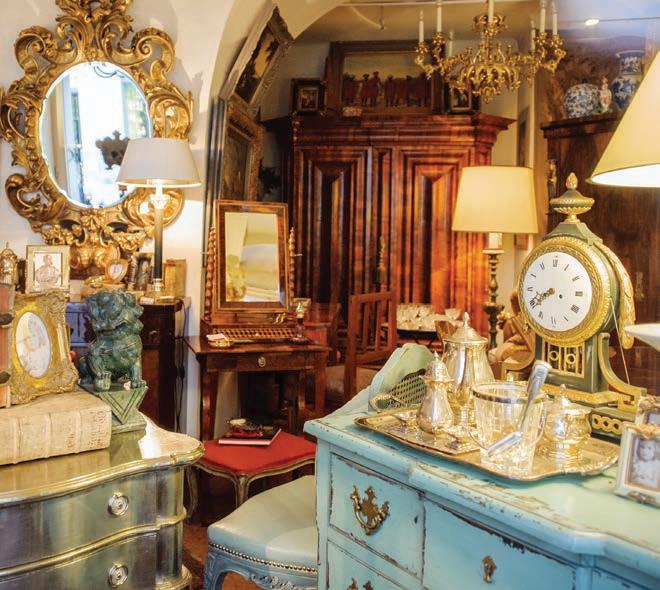

Big things are coming up at

Connect with us!
ThomasRoadChurch
ThomasRoad � Thomas Road Baptist Church
There’s something for everyone at Thomas Road, and we don’t want you to miss a moment!
Join us every Sunday at 9:15 & 11 a.m. for worship and biblical teaching.
Invite your friends and family for Easter Sunday, April 20, with special services at 8, 9:15 & 11 a.m. — a powerful time to celebrate the hope of the resurrection!
Save the date for Vacation Bible School, June 9-12 — a fun-filled week where kids will discover truth, faith, and adventure!
Learn more at trbc.org
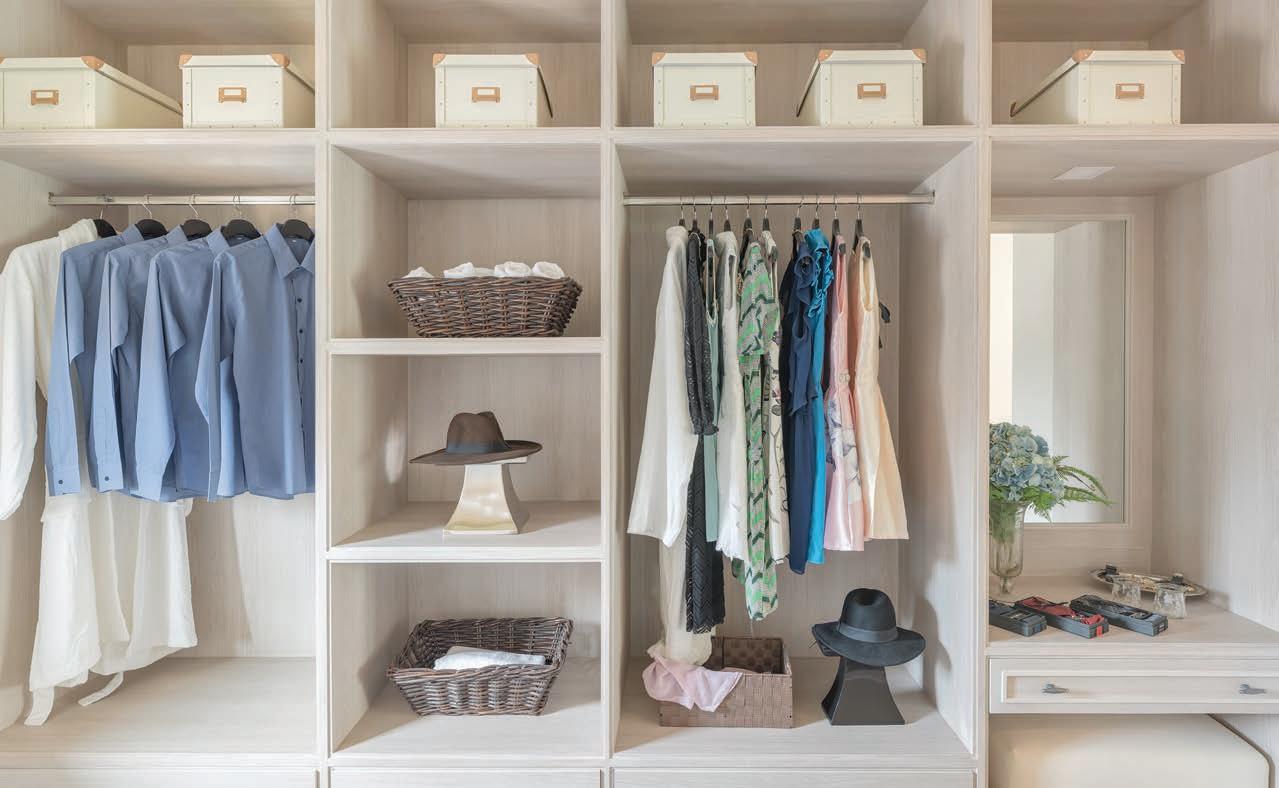
BY KATE ERICSSON
Baskets, chests and armoires are some of the earliest versions of closets, dating back to Roman times. As industrialization happened across the world, people had greater access to more affordable goods and needed spaces in which to store them. In the 19th century, Americans established the closet as we know it — its own space built directly into the wall. These were small, usually the size of the door that opened into it.
Today, we are accustomed to larger fitted and walk-in closets in bedrooms. The standard size for a walk-in closet is typically 5 to 7 feet wide and 7 to 11 feet long. Larger luxury closets may range from 10 to 14 feet wide and up to 12 to 18 feet long. Modern Americans need (and expect) large closets. Closet size can even be a factor in a home purchase. According
to a national survey by ClosetMaid in 2016, the average number of pieces in an American woman’s closet was 103, with 30 percent of it unwearable or never worn. The average male owns 74-84 articles of clothing.
Whether you have a modest-sized closet or a luxurious walkin, investing some time in its organization will result in a tidy and functional space that will bring you pleasure and save you time when getting dressed.
Spring is the perfect time to tackle a closet project, and it need not be a daunting task. Dealing with the contents first will allow you to address the structure second. Simple modifications with smart storage systems can help the overall flow of your closet. Professionals can also help customize closets and optimize structure by building shelves or installing drawers, essentially retrofitting an old closet.


The first step to any organization project is decluttering. Either pull everything out or go through every item in your closet and ask:
n Does this fit?
n Do I wear this regularly?
n Does this suit my current style?
n Is it in good condition?
Divide your items into three categories: keep, donate and discard. Take a cue from Marie Kondo: if it no longer sparks joy, it’s time to let it go. Likewise, if you haven’t worn it in years, it’s time to part ways. For donation tips, see page 105. If you share a closet with a spouse, it is advisable to do this together. People have different reasons for hanging on to things. You might make an assumption about that frayed button-down shirt that has sentimental value in your partner’s eye. The second step is to categorize and group in ways that make sense to you. Some simple groups are tops, (blouses and T-shirts), bottoms (jeans and trousers), skirts, dresses, outwear and accessories. Some people like to take it a step further and implement a colorcoding system starting with light colors and gradually moving to darker shades.














The easiest way to immediately transform a closet? Invest in coordinating hangers; they eliminate visual clutter in your closet and help save space. Velvet hangers, in particular, are super slim and take up half the room their bulky wooden and plastic counterparts do.
Next up, maximize your space with smart storage solutions. For example, use vertical space by installing wire shelving to store folded clothes or sweaters. Use hanging organizers for shoes. Drawer dividers keep things like socks, lingerie and accessories neatly separated. Hooks and pegs are good for belts and bags. If you have a lot of short items like shirts and skirts, an extra hanging rod will double your space. Conversely, if you have primarily longer pieces and double hanging rods, remove the bottom one.
If you need to customize your closet further, look for a reputable closet organization company and schedule a consult. A closet designer will visit your home, measure the space, discuss your needs and produce a design. The system is then installed by professionals and comes with a warranty.



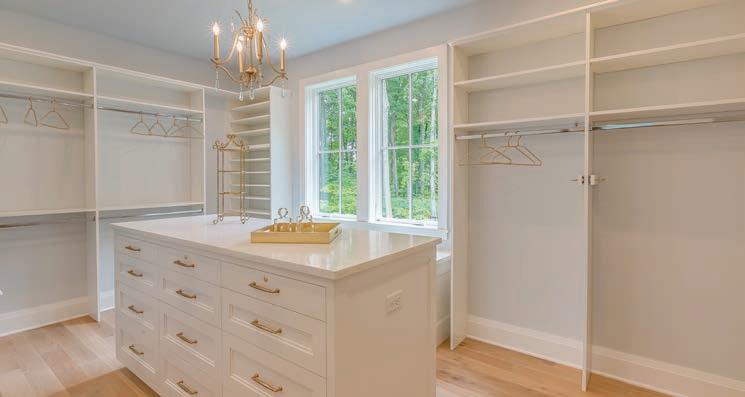
Toler Insulating, a locally owned and operated insulation company in Lynchburg and Central Virginia offers closet design. Heading up this division of the company, Anders Sunwall uses CAD (computer-aided design) to create digital designs from a customer’s closet specifications in just a few hours. He uses top industry suppliers like Rubbermaid, a company that sells adjustable and custom closet systems. Sunwall does renovations on closets, particularly for empty nesters who want to turn a bedroom into a closet. However, the majority of his business is with new builds in Lynchburg.
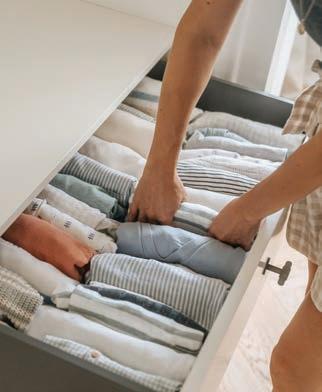
Sunwall and the clients are able to create spaces that offer cost-effective ways to achieve goals and create unique features like an island wardrobe. He, himself, has an organized closet, and his wife has her clothing color-coordinated. “An organized closet really helps life in the mornings. You can find what you need and keep on rolling,” he says.
Once your closet is decluttered and organized, it will benefit from ongoing but quick maintenance. Spend a few minutes each week tidying up and putting things back in their designated spots. With the changing of the seasons, review your wardrobe, and make sure everything you have in there is still something you like and use. ✦

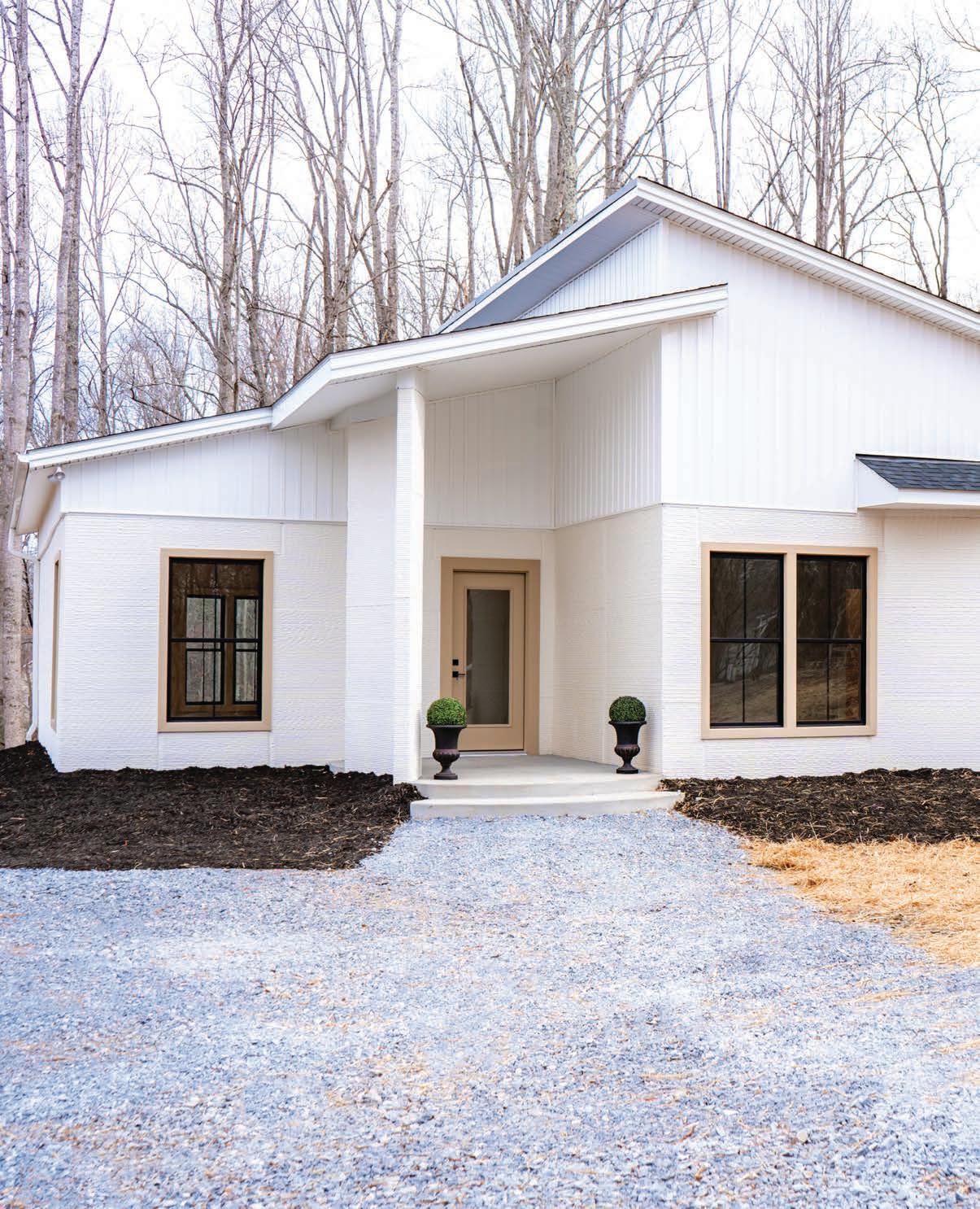


BY JERRY HALE | Photos by James River Media
HOME readers may recall a story from Summer 2024 introducing KKrane, a Lynchburg company pioneering the use of indoor 3D-printed construction. Their proof-of-concept home in this area has now been completed. Builder/developer and robotics engineer Zach Baldridge, KKrane’s founder and CEO, firmly believes 3D printing of structural panels — done indoors under strict quality control conditions and immune from weather delays — is the engineering breakthrough we’ve needed. The resulting structures are incredibly strong, superbly energy efficient, and impervious to mold, mildew, rot and termite damage. There’s the potential for significant savings in overall building time and cost versus traditional stick-built construction. Says Baldridge, “Our 3D-printing facility can operate 24/7, without interruptions from employee time-off, darkness or weather events.”

Suzanne
VMD
Ambulatory Equine Veterinarian


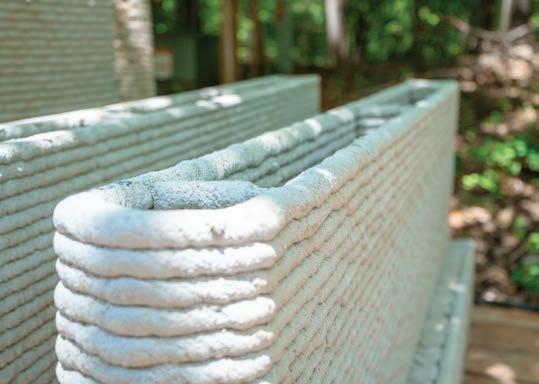
Baldridge has 20 years of experience creating custom homes, and KKrane offers a full range of design/build and project management services. The contemporary-design home in Woods Landing, Bedford County is their first 3D-printed dwelling, though the building that houses KKrane’s printing robotics was also constructed using their proprietary technology.
A total of 12 truckloads of panels, each weighing up to 1,000 pounds, were brought to the building site: 65 exterior panels, 45 interior panels and several more for a retaining wall and a striking four-stack curved front-entrance column. While drywall could be added to create smooth interior walls, this home retains the beaded concrete surfaces inside and out, lending a futuristic vibe. The concrete panels get three coats of paint, the final of which can be tinted to owner preference. “It’s an extremely durable elastomeric formula,” Baldridge says, “and should last 20 years or more, even outdoors.” Rotresistant composite trim boards are also used to help keep maintenance to a minimum.
Baldridge’s team used a skid-loader and, later, a small crane to offload and stack the panels. “Turned out the crane was faster due to its extended reach without having to be relocated for each panel,” he said of learnings that will speed construction of the next 3D-printed home. “While setting the outside panels took nearly a month, the crane let us set all 45 indoor panels in a day and a half.”

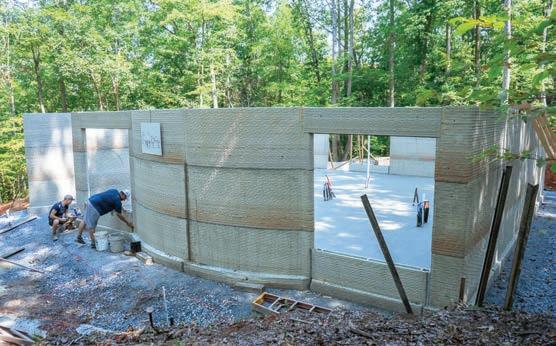







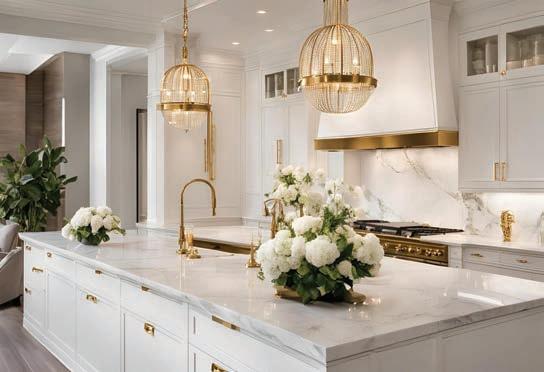
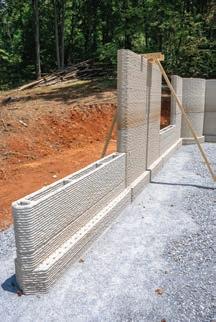





Exterior panels used for the first course are printed to include a wide “footing” base. Steel rebar rods extend inward and are buried in concrete when the slab floor is poured, tying the entire base of the home solidly together. Once courses two and three are in place, rebar is dropped into their pre-printed locking chambers, which are then filled with a concrete mix. The result: a concrete pillar roughly 5 inches in diameter runs vertically through both ends of each panel stack.
“Homes built this way are ideal for earthquake prone regions,” Baldridge notes. “And where fire is a threat, metal roof trusses and surface, plus concrete-based hardy planks for trim and gables, can be used to further fire-proof the structure.”
Panels are printed “hollow” to provide voids for insulation. Once that is blown in, 2" x 6" wooden capping boards, on which roof trusses will sit, are installed to lock the top panels together. HVAC ducts are run in the space above the ceilings. “It took just a day and a half to cut all the holes for electrical outlets and switches using a diamond saw tool,” Baldridge notes.
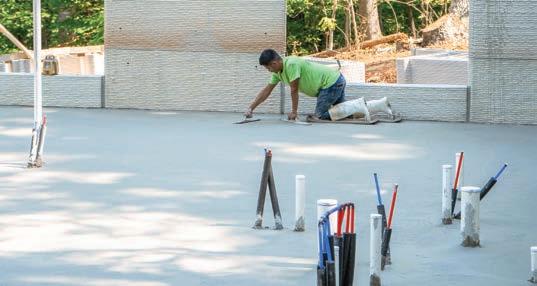
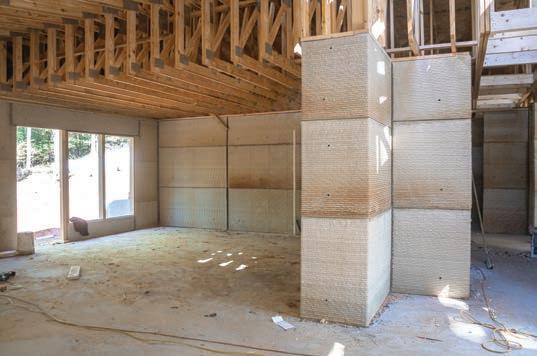




His design for the 3-bedroom, 2-bath home features several aesthetic curves, including a bowed living room wall with window looking out past the patio to the woods and several curved corners, visible inside and out. Set on a 1.6 acre lot, it was listed at $439,000. This home has no basement, but ample accessible air-conditioned attic storage was included. KKrane can print panels to form basement walls, however, and has done so for a hybrid (part printed, part stick-built) home in Charlottesville.
Baldridge recently attended the 2025 “World of Concrete” show in Las Vegas to compare his approach with those of other innovators in this field. His summary: “Most are selling mix formulations for use in outdoor on-site 3D-printing systems. Printing outdoors significantly limits the climates where this technology can be used and subjects projects to weather uncertainties. KKrane offers a start-to-finish approach from design … to climate-controlled panel production … to an installation crew that knows the system. We think there’s a significant place for that in modern home building.” ✦


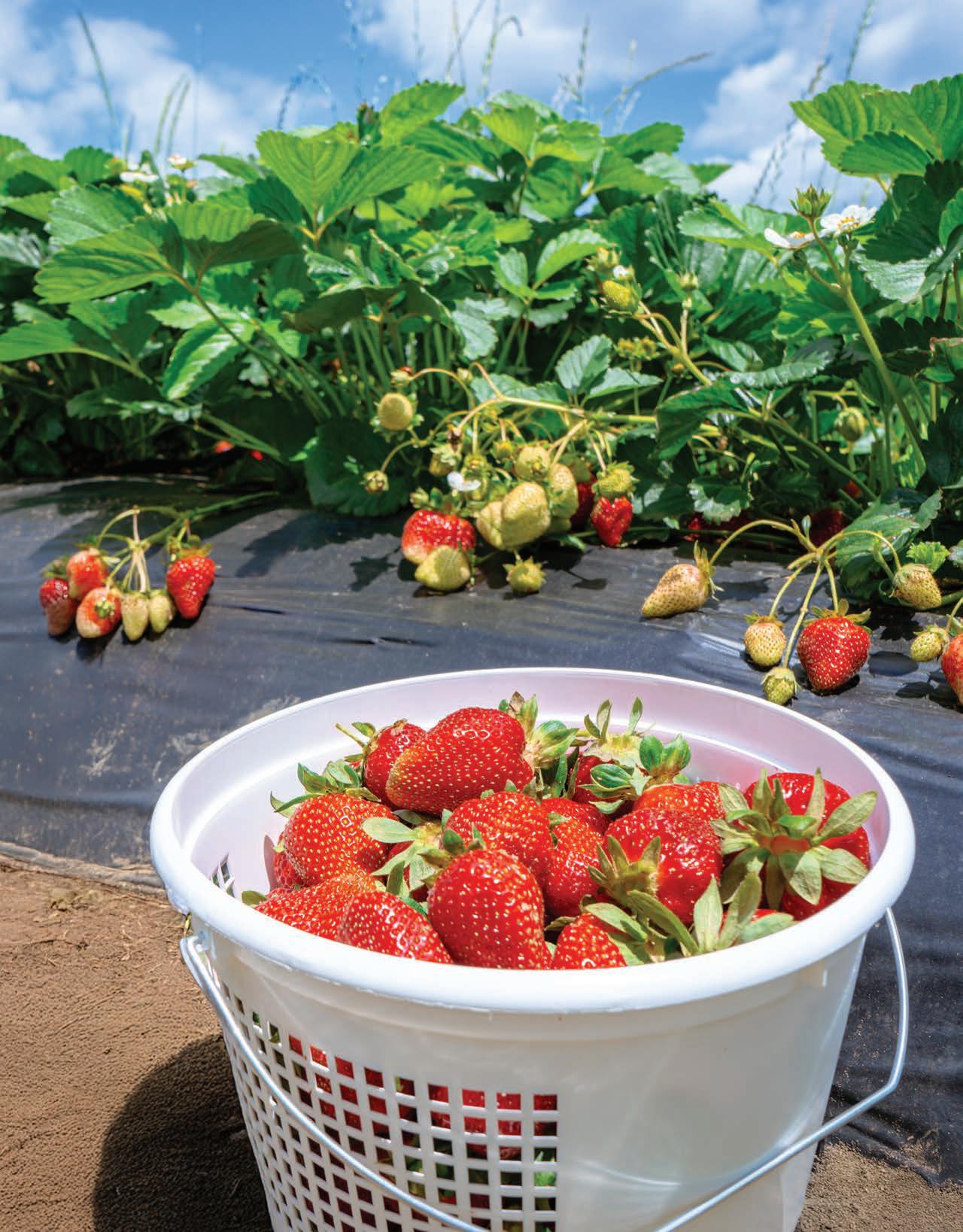


BY RYAN TIPPS
Starting in late April or early May in Virginia, you’re almost guaranteed the opportunity to savor one of the produce world’s sweetest and tastiest treats: fresh strawberries. For several weeks going into June, growers begin harvesting these delights — and for those of us adventurous enough to seek out a little fun, many farms offer a pick-your-own option.




While Virginia strawberry farms are most likely to be found in the Eastern region, where the coastal moisture and the sandy, fertile land of Tidewater allows this crop to thrive, there are a few closer destinations. The exact timing of the strawberry season can vary depending on several factors, including altitude, precipitation and temperature.
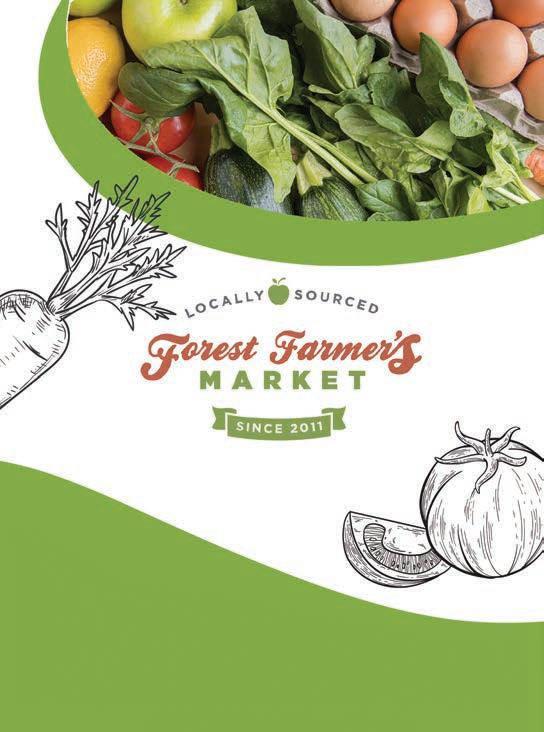

Around the U.S., more than 8,000 strawberry farms span 73,400 acres. Strawberry-growing is separated into eight regions, and Virginia is part of Region 7, which largely consists of the Southeast minus Florida. Region 7 is the third-highest producing region for strawberries, with Virginia boasting 231 strawberry operations. According to Virginia Cooperative Extension, the largest number of those is in the 1- to 3-acre range, though roughly a quarter are less than 1 acre.

Well-established strawberry varieties (or cultivars) such as Chandler, Camarosa, Camino Real and Benicia excel in Virginia, though others, such as Sweet Charlie and Flavorfest, are known as some of the sweetest around.
Strawberries are considered an ideal fruit for pies, fresh eating or even for freezing for later in the summer. My daughter loves a hearty bowl of strawberries (admittedly with a touch of powdered sugar, though that’s certainly not necessary!) as a treat after breakfast.



Growers often embrace the family-friendly aspect of pick-yourown (or U-pick) offerings because it allows them to connect with customers and eases some of the labor burdens that produce farms endure. Some sources say that U-pick is so popular in the strawberry sector that upward of 75 percent of strawberry farms do this for harvest.
There are a handful of popular and well-established U-pick strawberry operations near Lynchburg and Danville, and if we’re being honest, there may be a smattering of backyard-type operations that you’ll likely only discover by stumbling across a homemade sign staked into the ground along a curvy two-lane back road. Don’t pass on that opportunity if it arises!
But if you want to plan a course, check out the farms listed on the next page. It’s recommended that you visit their website, social media pages or call or text to confirm that they are open and still have crop available that day for picking. It’s not uncommon for ripe strawberries to be picked over by noon each day.
And, just in case the farm doesn’t have containers available, it’s always good to bring one with you!
There is a bit of an art to picking a strawberry properly, and you can chat with someone on site to help you get it right. Generally, you’ll want to grasp the stem just above the berry, and pull with a slight twisting motion. Then, carefully place the berry in the container, and be certain not to overfill it or try to “tamp down” the berries you’ve already harvested. And, please, be mindful of where you place your feet and knees while you’re picking!
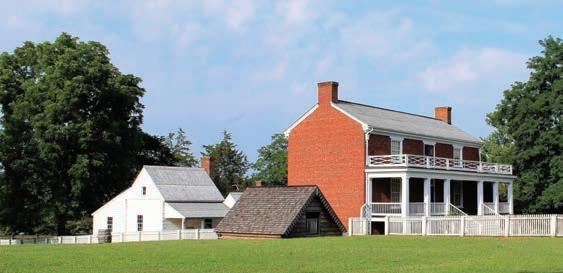


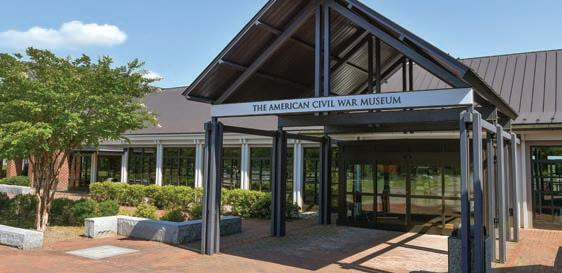






Seaman’s Orchard: Seaman’s Orchard is about 30 minutes north of Lynchburg, just off of U.S. 29. The operation planted its first strawberry patch in fall 2003, and its strawberries are grown on raised beds on top of plastic in clean, green grass rows. (434-277-8130)
Yoder’s Farm: In Rustburg, 20 minutes south of Lynchburg, Yoder’s Farm is a family-run diverse operation, which produces juicy Chandler and other varieties of strawberries for its customers. The farm has spacious, well-strawed row access to make picking strawberries as easy and user-friendly as possible. There is also convenient parking available for visitors. (434-401-4864)


Bachelor Hall Farms: On the western side of Danville, just off of U.S. 58, Bachelor Hall Farms has been doing strawberries since 1996 and calls itself “pretty much the only organic operation within 100 miles.” In addition to the robust supply of strawberries, visitors can find produce such as broccoli and collards. (434-685-7959)
Motley’s Strawberry Farm: Easy to access near the crossroads of the intersection of U.S. 29 and Virginia 40 in Gretna, Motley’s Strawberry Farm does a hearty business of pick-yourown and prepicked strawberries during the late spring and early summer months. The farm has beautiful, easy-to-traverse rows and has a very active presence on Facebook. (434-656-2838)

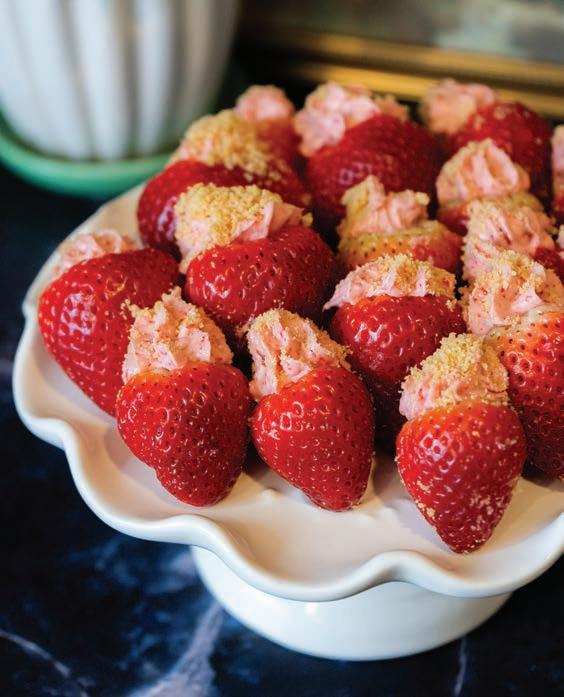
Of course, you’ll need something fun to do with any strawberries you pick. Laura Ann Pollack, who works at Healthy Chesapeake and encourages kids to “try the rainbow” of food in a program she started called Color Your Plate, offers this amazing recipe:
Whipped Strawberry Bites
24 fresh strawberries
1 cup freeze-dried strawberries
½ cup shortbread cookies, crumbled
8 ounces cream cheese, room temperature ¾ cup confectioners’ sugar
1 teaspoon bourbon vanilla extract
Core and hull strawberries (tip: use a straw). Use a food processor to crumble the freeze-dried strawberries into a powder, and set aside. Use the same food processor to crumble the shortbread cookies, and set aside. Combine cream cheese and confectioners’ sugar into a mixing bowl. Using a mixer, start with a low speed, and gradually increase speed to blend ingredients. Mix for 2 minutes on high speed for a smooth and fluffy texture. Adjust the speed to the lowest setting, and add the bourbon vanilla extract. Slowly add the freeze-dried strawberries until fully incorporated. Fill a piping bag with strawberry filling, and use it to squeeze into fresh strawberry. Top with crumbled shortbread cookies. ✦


The Lynchburg Humane Society (LHS) is a nonprofit animal welfare organization that owns and operates the Edythe Elizabeth Stauffer Center for Pets in Lynchburg and the Spay and Neuter Clinic in Evington. The Lynchburg Humane Society is a no-kill facility that helps more than 12,000 dogs and cats annually and more than 12,000 people. Its mission is to lead the way in providing a compassionate, safe community for animals and people through progressive, life-saving programs, services, resources and education. LHS recently launched a Capital Campaign to build a new regional veterinary clinic offering affordable care for pets and their families in our community and beyond. James River Media’s Mari White talked with Jill Mollohan about this new project and how you can get involved!

Mari White: So Jill, why is this project so important in our community?
Jill Mollohan: Every day, pet owners in our community face difficult decisions due to the high cost of veterinary care and/or challenges to their financial situation. Many are forced to forgo essential treatments or even surrender their beloved pets because they cannot afford the necessary medical services. This gap in affordable veterinary care not only affects individual families but also contributes to pet overpopulation and homelessness.
The need that we serve is to remove the barriers of pet ownership to ensure that pets do not enter the shelter system in the first place. We do this through affordable and accessible veterinary care, judgmentfree outreach, pet pantries and other lifesaving services. By making pet ownership affordable and providing accessible resources to the community, we ensure that pets stay with their families and aren’t forced into overcrowded shelters.
Mari: What will the services look like?
Jill: This clinic will offer a range of services including wellness exams, spay/neuter surgeries, dental care, treatments for illnesses and injuries and more at a significantly reduced cost. By providing affordable veterinary care, we aim to keep pets healthy and happy with their families — where they belong.
Mari: Is this available for folks outside of the City of Lynchburg?
Jill: Yes! Our existing Spay/Neuter Clinic in Evington serves about 21 localities in Virginia, and our new clinic will allow us to expand our service areas! We know that affordable vet care is often worth traveling for, if possible, for the family.

BY MARTHA S. COFFEY

No doubt about it, springtime is the season of renewal and fresh starts. Here in Virginia, as days lengthen, flower buds poke through the soil, bunnies crisscross lawns, birds sing and chartreuse leaves unfurl, all to herald spring. People far and wide behold these signs of spring and are energized to undertake a deep cleaning of their living spaces. It’s
that age-old “out with the old and in with the new” feeling that drives us. And once the arduous task of spring cleaning is complete, a cleaned up and cleaned out home is the perfect backdrop for five easy, but high-impact home updates. Depending on your time and budget, consider one or more of the following ideas for how to update the most-used spaces in your home.


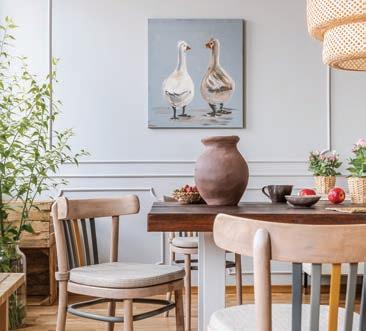
What better place to start your spring refresh than in the kitchen, the hub of your home? This prime real estate can always benefit from some attention. Instead of a major overhaul to replace cabinets, countertops and flooring or to repaint walls, consider changing your cabinet hardware, often referred to as the “jewelry” of a kitchen’s outfit. There are more stylish hardware options available than ever before. Just stroll down the appropriate aisle at Lowe’s or Home Depot or visit online sites such as Top Knobs, Schoolhouse, Rejuvenation or West Elm for inspiration. With careful measurements to guide your selection and just a few hand tools, the change-out of kitchen cabinet hardware can be accomplished in a day and significantly update this important room.
But if a complete set of new hardware isn’t in your budget, there are many other less costly updates that can easily be made to the kitchen. Start with new kitchen towels and dishcloths, give your back a break and add a colorful anti-fatigue floor mat in front of your sink, invest in a new set of cookware or tie new cushions onto the seats and backs of chairs around an eat-in kitchen table. Replace any artwork you already have with something new and spring-themed. Illustrations or photos of birds, bunnies, chicks and florals are all joyful symbols of springtime. Even a bowl of fresh fruit on the countertop can add a welcome burst of color.




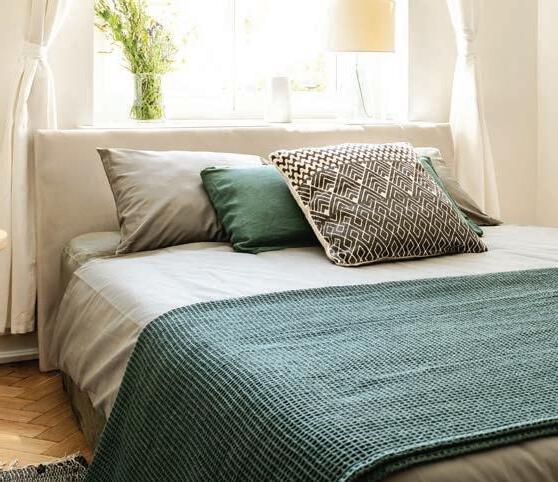
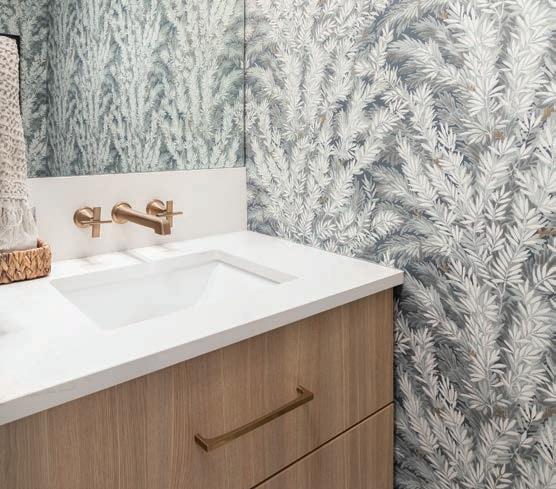
Bedroom update
How numerous are the ideas for easy updates to the bedroom! With one stop at a department store or an online retailer’s website, you can purchase an eye-catching new bedspread or comforter with matching pillow shams, throw pillows in coordinating colors and assorted textures, a soft blanket for the end of the bed (perfect for naps!), as well as a stylish runner rug by the bed if you have bare floors. Adding a new or even a repotted plant in a brightly colored container will literally breathe fresh air into this important room in your home.
Family room refresher
Once the dust has settled following your thorough spring cleaning, embark on a close inspection of the wall and trim paint in another of your most-used rooms. If an inspection of your family room shows scuff marks or other scars in painted surfaces, try one of the new paint pens (search for Slobproof Touch-up Paint Pens on Amazon), which are fillable with your own leftover wall and trim paint. Using these handy pens will
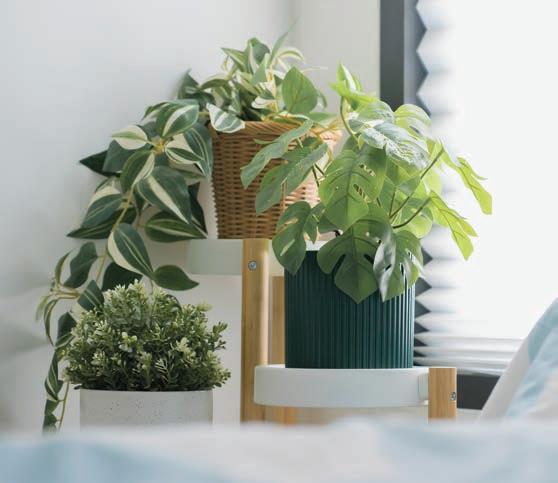

eliminate the need to purchase new cans of color-matched wall and trim paint, allowing you to quickly restore any room to just-painted perfection.
After paint touch-ups, consider adding new throw pillows and soft throws to your sofa in lighter, brighter colors.
Designers at Better Homes & Gardens also recommend changing lampshades and draperies, purchasing new houseplants and re-organizing bookshelves for quick, impactful updates to your family room.
Bathroom redo
While not nearly as large as other oft-used rooms in the home, bathrooms are certainly important and can also benefit from an occasional sprucing up. Because visitors are likely to see these rooms, designers often suggest going bold in these smaller spaces. Try some wild wallpaper (now available in peel-and-stick versions), a stylish new mirror or piece of art, as well as new plush towels, throw rug and shower curtain for guaranteed pizzazz.
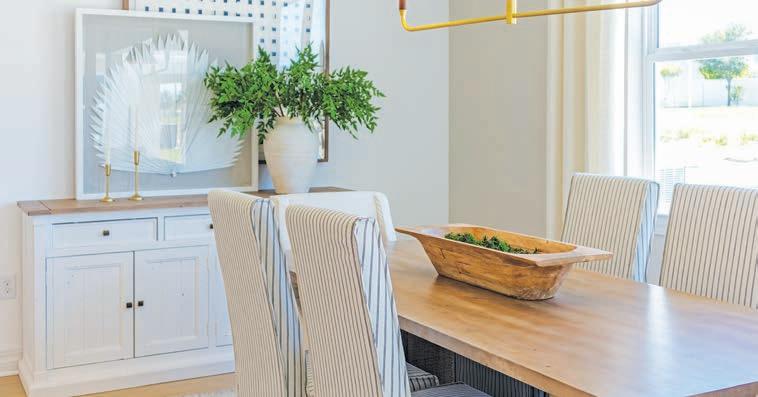






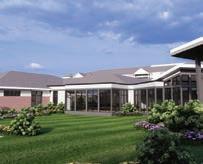
Tablescape revamp One of the easiest ways to up the wow factor in a room is to change any tablescape within it. This can be done to kitchen and dining room tables, dining room sideboards, family or living room coffee tables, or bedside and foyer tables, plus any other flat surfaces in need of adornment.
Interior designers at Elle Décor and Houzz both recommend beginning your tablescape revamp by searching your own home for suitable spring accoutrements. Think likenesses of baby animals, candles and bowls in pastel colors, as well as books with colorful covers. Beneath these finds, add a new seasonal fabric table runner. Curating a pleasing blend of your own possessions with some newly purchased ones to create fresh tablescapes can be a quick way to add spring cheer to your home.
Indeed, with minimal expense and effort, you can customize all these suggestions to bring about a metamorphosis in your own home this spring. ✦
$80 Million Expansion at The Summit!
It’s all coming to our Lynchburg campus:
• Innovative hybrid homes (the best of cottage and apartment living combined)
• Beautiful community updates
• 14,000 sq. ft. Wellness Center with pools
• New cottage homes
• State-of-the-art Memory Support neighborhood




Stop by our New Information Center, call 434-333-2138, or scan the QR code to learn more.
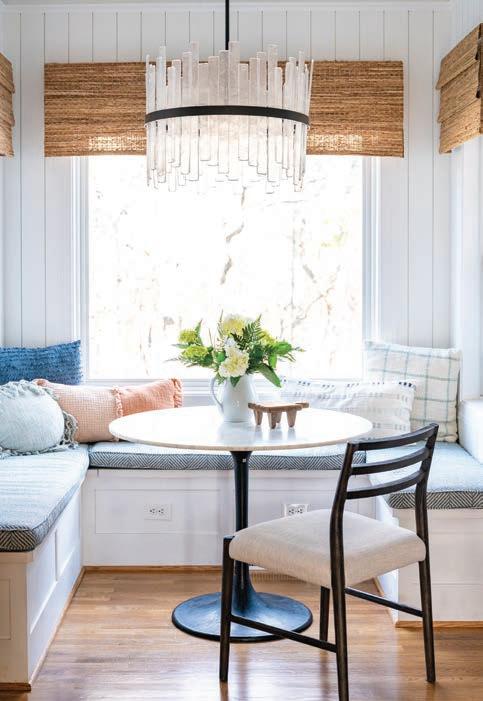
BY ASHLEY BLAIR SMITH
The change in seasons tends to bring about the desire to deep clean our homes and dust away the cobwebs. It also might present you with the urge to shift things around a bit in your space. Whether you’re feeling the subtle pull to get started on those design projects you’ve been daydreaming about all winter long or simply looking to refresh a room’s color scheme, creating a mood board can act as a beautiful starting line for your next home renovation or room rearrangement.
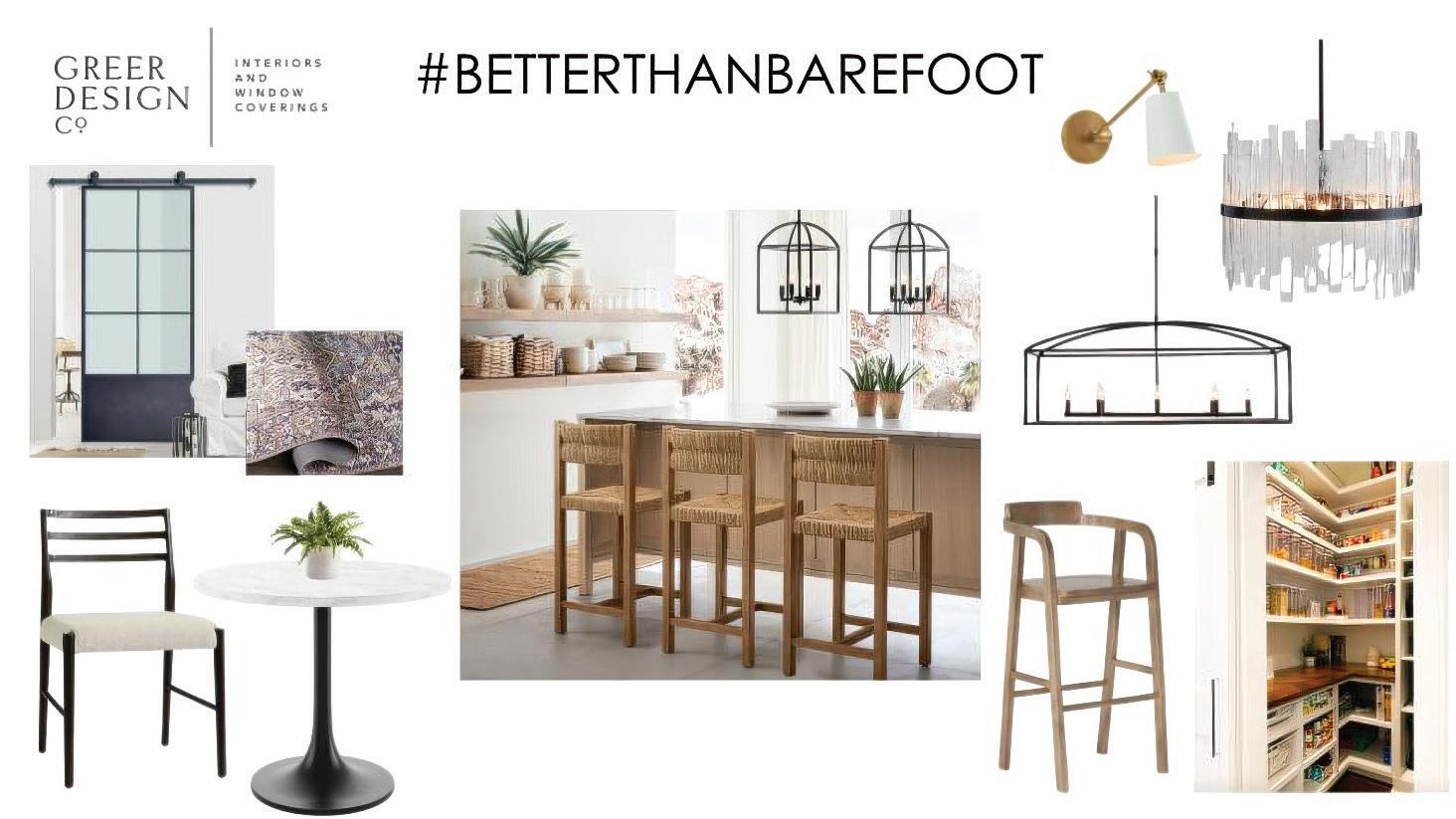

Sometimes called a design board or an inspiration board, a mood board is a visual tool that helps to refine the ideas you have for your space. Whether you’re looking for mid-century modern or a more traditional style, a mood board can help you visualize how different textures, color palettes and wood tones flow together to create the style you’re envisioning.
According to Co-Owner of Greer Design Co. Mady Perillo, a good mood board includes several important pieces in order to help bring the vision of a home interior to life.
“The most important aspect and overall goal of the mood board is really to create a curated space where all your selections look cohesive and beautiful together,” Perillo says.

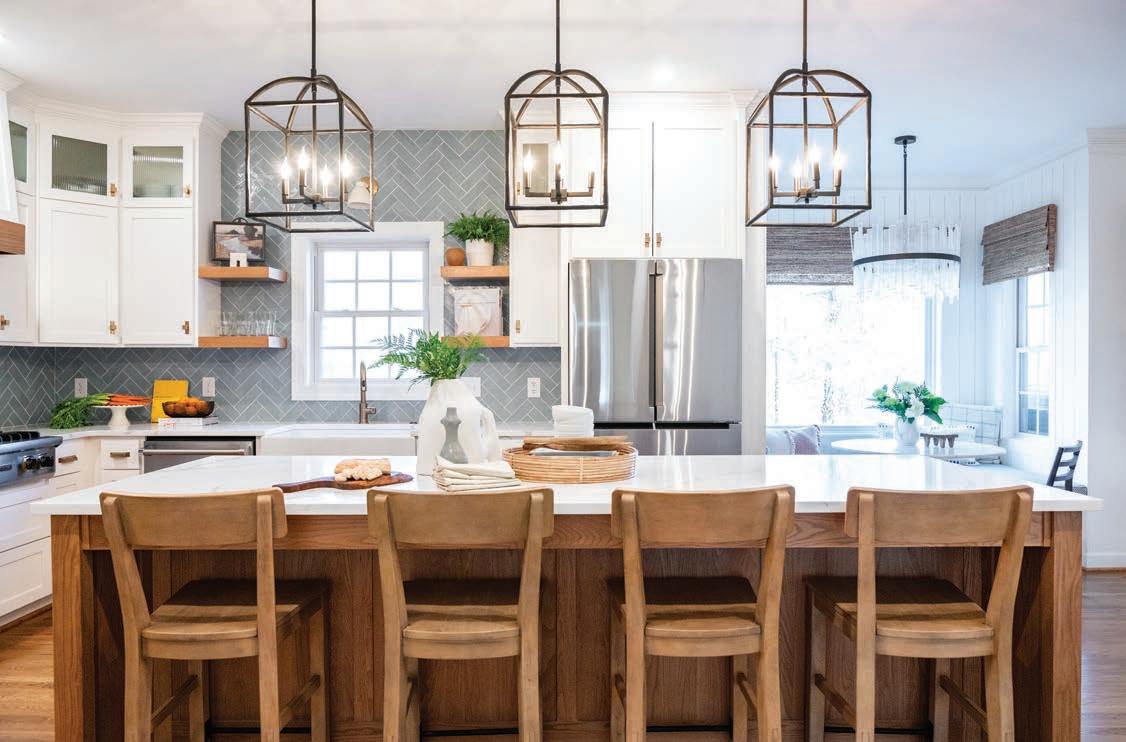
LESS HUSTLE & BUSTLE, MORE TRANQUILITY? LESS TRAFFIC, MORE PRIVACY, SMALLER SCHOOLS?
Come let us show you the communities around Central/Southside Virginia including our quaint little town of Altavista! It offers the beautiful Avoca Estate/Historical Museum, one of the best YMCAs in the state, wonderful public library and some of the most scenic parks and walking trails you’ll ever see, as well as the new Staunton River Canoe Launch. Plus we’re just a short distance to Leesville and Smith Mountain Lakes!




Named Altavista Area’s Best Real Estate Agent for the last 18 years, Cindi Parsons offers a FREE Market Evaluation to help determine your home’s worth and is eager to serve you in buying or selling.
As a Certified Relocation Inventory Specialist, a Certified Destination Services Specialist, and Certified Marketing Assistance Specialist, let her put her 40 years of experience to work for you!
Call Cindi at (434) 851-8522 today! cindiparsonsrealestate@gmail.com

| Campbell, Pittsylvania & Bedford Counties | Leesville & Smith Mountain Lakes | Lynchburg www.agnesdowdyre.com | 1003 Main St, Altavista, VA 24517

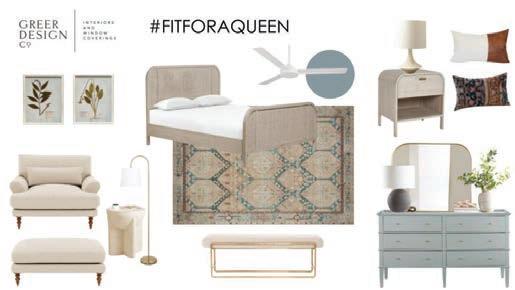
The building blocks of a mood board include gathering inspirational images, choosing a color palette, taking inventory of furniture, lighting and décor elements that you have sourced for your space, and collecting any and all textural elements such as tile, stone, fabrics, cabinetry and window coverings that you want to use.
The first step is gathering inspiration for your space. This can look different for each individual, but a great place to start is collecting images that speak to you.
According to Perillo, Instagram, Pinterest, print ads or design books are great sources for images. You don’t have to limit yourself to visuals of interiors; rather, choose photos that speak to you. Focus on how the image makes you feel, the color palette and if it aligns with the feelings you want your home to evoke.
A cohesive color palette is another main building block for your mood board. Generally, you’ll want to choose three to five core colors, including neutrals. “This can be used for paint, stains, upholstery and window coverings,” Perillo says.
When it comes to furniture, lighting and décor elements, “you want to be sure they are all complementary to each other and look good paired together,” Perillo says.
After you’ve curated the pieces for your mood board, next is putting it all together in either a physical or digital format.

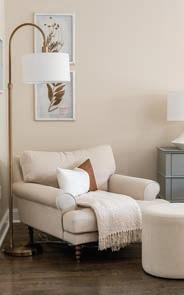



There are pros and cons when using either a physical or digital mood board — that’s why Perillo recommends using both when designing a space. “Both are necessary to create a cohesive design,” Perillo says. “We always pair them together.”
It can be easier for you to visualize your space when you have tangible elements for the room in front of you. This is one of the benefits of a physical mood board.
What should you include on a physical mood board? Paint swatches are a wonderful starting point for the color palette portion of your board. Other great elements to include are samples of tiles, fabrics, hardware and flooring. Perillo recommends shopping locally for these items.
“Local stores will have samples you can borrow or have, and [they] have experts to assist you in your project,” Perillo says. “If you can’t find something locally, I would look to see if your favorite online retailers offer samples of fabrics, wood and tile.”
Seeing how different textiles, wood grains, hardware and surfaces all look and feel together can really help to bring your room inspiration to life.
A downside of a physical mood board, Perillo says, is that it can be difficult to keep together and is not easy to transport. “But a pro-tip is to put all of your elements in a decorative tray that you can easily move around,” Perillo says.



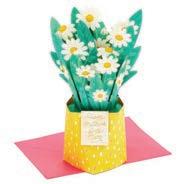
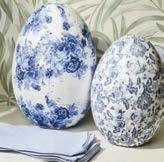

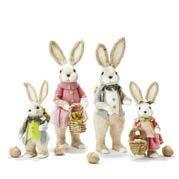


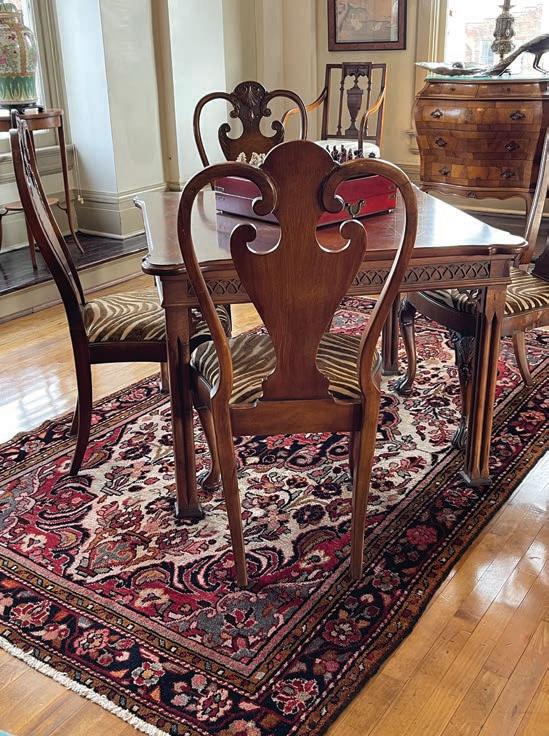



When creating a digital mood board, Perillo recommends using a program such as Canva or PowerPoint. Both are fairly easy programs to navigate. To use either program, you’ll need to import digital photos from your phone or camera or screenshot images from favorite websites. Depending on your skill level, you can then remove backgrounds, change image sizes and orient the images on your page to find the right fit.
A pro of using a digital mood board, according to Perillo, is that it’s easy to create, edit and share. This allows for continual tweaking and updating, which can be especially helpful when working with an interior designer on your project.
Your digital mood board can easily be saved and kept in cloud storage. Another benefit of the digital board is that you can add links to home interior items for ease and convenience of shopping.
A con of using a digital mood board is that colors appear different hues based on your screen, Perillo says. It can also be hard to gauge the scale of different items in each space by simply viewing them on a digital board.
Whether you’re gathering inspiration for a design that’s simply a daydream or you are working with an interior designer on a home renovation project, a mood board is a vital, cost-effective tool. Here’s to spring dreaming! ✦
What: Join us for a mood board workshop hosted by Greer Design Co. at Curtains, Blinds & Bath! Come with ideas on what space you want to create your board for, and bring your laptop.

When: Thursday, May 8; 6-7:30 pm
Where: Curtains, Blinds & Bath (18458 Forest Road, Forest) Register:


BY BECKY CALVERT
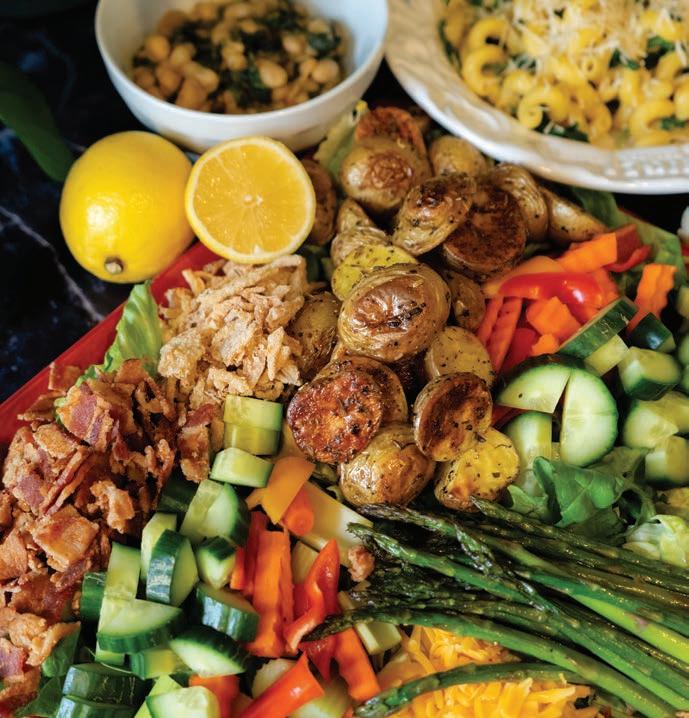
My favorite thing about spring is all the fresh greens. After months of eating root vegetables, the idea of fresh greens makes me slightly giddy. Not only do I have a tendency to overplant them in my garden, I also have a habit of buying all the green things I see at the farmer’s market. This has led to my fridge being absolutely packed with greens, which has then led me to get creative with using them all. Here are three of my family’s favorite go-to meals incorporating fresh greens. Each recipe is easily varied according to what you have on hand, so you can serve them at least once a week but with a few changes here and there.

Whether retiring or changing jobs, you’ll want to know your retirement account options.

There are four potential options for your 401(k) when leaving an employer:
• Leave it in your former employer’s 401(k) plan, if allowed by the plan.
• Move it to your new employer’s 401(k) plan, if you’ve changed employers and your new employer plan allows for it.
• Roll the account over to an individual retirement account (IRA).
• Cash it out, which is subject to potential tax consequences.
We can talk through your financial goals and find the option that works best for you.

Brent Helms, CFP®, ChFC®, AAMS™ Financial Advisor 101 Duncraig Drive Suite 101 Lynchburg, VA 24502 434-239-3089
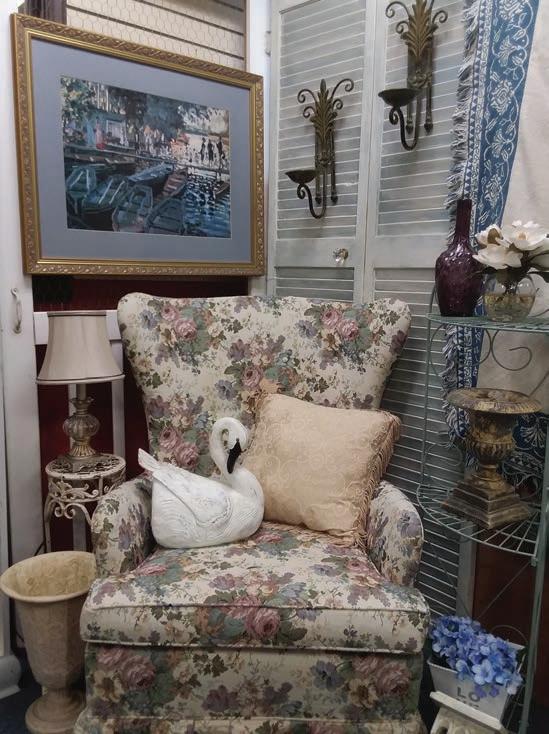
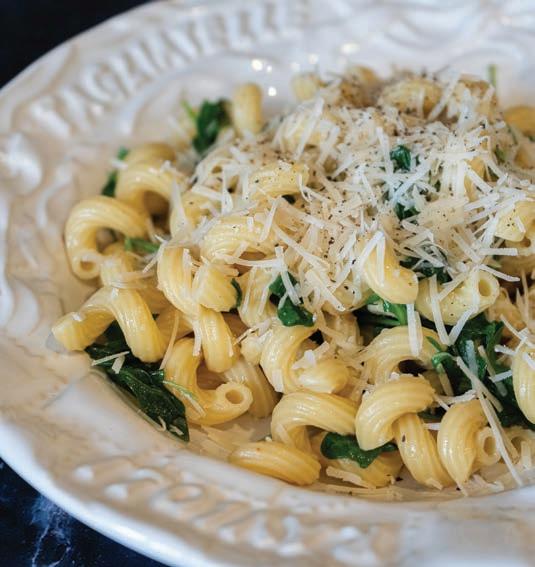
At its most basic, this dish is fresh greens tossed with pasta. Garnish it with Parmesan cheese, and finish with a squeeze of fresh lemon and a grind of fresh black pepper. Or add any number of pantry items to offer some variety and substance to the dish. Among my favorite riffs on this are the addition of canned tuna, white beans, black olives, capers or canned clams cooked in white wine.
¾ pound pasta, any shape
Olive oil (a few Tablespoons or more)
1-2 cloves garlic, minced 5-8 ounces baby arugula (or spinach)
Salt, pepper
Fresh lemon juice to taste
Parmesan cheese
Optional:
1-2 cans tuna OR 1 can white beans OR 1 can clams, drained, liquid reserved
Crushed red pepper
Cook the pasta in salted water. While the pasta is cooking, wash greens. Heat oil in small pan over medium-low heat, and sauté garlic until fragrant. If using crushed red pepper, add it in addition to the garlic. If using tuna or beans, add them to the pan and heat briefly. When pasta is done, reserve a cup of the cooking water before draining. Drain pasta, and add oil with garlic (and tuna, beans or clams if using). Add greens, and toss until well combined. The greens will wilt as they mix with the pasta. Use reserved cooking water to keep the dish loose. Squeeze fresh lemon over the dish before serving. Serve with Parmesan cheese and freshly ground black pepper.
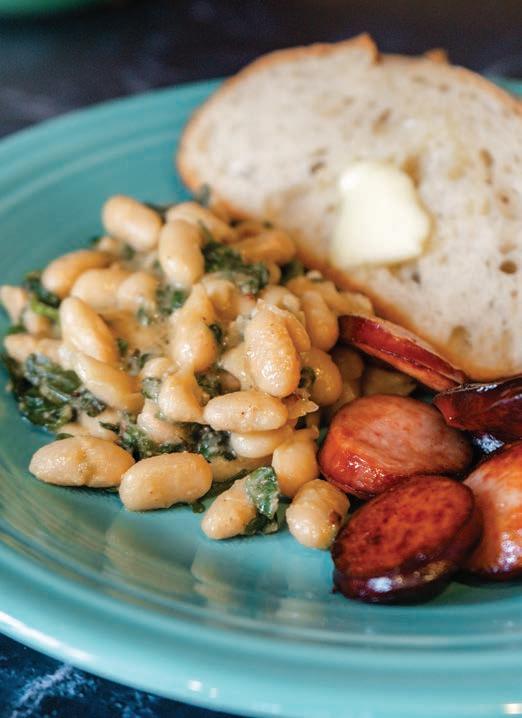
Greens and Beans
(Adapted from foodinjars.com)
This works with just about every green you can imagine. Round it out with sausage or Parmesan cheese. I like to toss it with pasta, although it’s also good with bread to soak up the juice, particularly if you serve it with some sausage. Don’t skip the lemon at the end – it makes the dish.
1/4 cup extra virgin olive oil
3-4 garlic cloves minced
Crushed red pepper
5-6 cups chopped greens
(anything goes here – micro greens, kale, spinach, arugula, mustard greens, endive or Swiss chard)
2 cups cooked white beans rinsed
1/3 cup grated Parmesan or pecorino
Juice of 1 lemon
Salt and pepper to taste
Heat the oil in a large skillet over high heat until it shimmers, and add the garlic and crushed red pepper. Stir quickly to cook, then heap the greens into the pan. Put a lid on the pan to help the greens wilt a little. After 2 to 3 minutes of cooking, check to see if the greens have wilted. If so, add the beans, and stir to combine. Add 2-3 Tablespoons of water and the cheese, and cook for another minute or two, until the greens are tender and the liquid in the pan has coalesced into a creamy sauce. Add the lemon juice, a little salt and 6 or 7 turns of a pepper grinder. Taste, and adjust the seasonings. Serve hot.



A composed salad is one that is arranged on a plate, rather than tossed in a bowl. It’s a great way to use what’s on hand while also focusing on the produce in season. Using seasonal ingredients means you can make this salad throughout the year, and it’s always slightly different. Start with a bed of lettuces, then begin to arrange your other items on top. You can shred, roll, dollop, chop, shave, blanche or roast your various elements so that the end result is a bit of controlled chaos. Keep your elements slightly big –you want to see what they are as part of the presentation.
You can create individual plates or one large platter. I like to arrange my salads on a platter, with the various elements laid out in stripes, but there’s no right or wrong way to arrange it. Round it out with a nice loaf of fresh bread, and you have a hearty meal with minimal effort. Here are the elements to consider:
SOMETHING LEAFY: This makes the bed for the other ingredients. Lettuces like Boston, spinach, arugula, romaine or iceberg.
SOMETHING RICH: Makes the salad a satisfying meal. Cheese, hard boiled eggs or caramelized onions.
RAW VEGETABLES: Focus on what’s in season. Radishes, sprouts, avocados, sweet peppers, cucumbers, carrots, celery or peas.
COOKED VEGETABLES: Blanched, grilled or roasted, they bring a variety of colors and textures. Beets, squash, cauliflower or broccoli, green beans, edamame or asparagus.
SOMETHING EARTHY: Gives the salad some substance. Beans, boiled potatoes, lentils, grains like farro, barley or quinoa.
SOMETHING TANGY: Helps to wake up all the flavors. Olives, capers, pickled onions, anchovies or cornichons.
SOMETHING SWEET & JUICY: Little bursts of flavor to contrast with the savory elements. Melon, tomatoes, figs, peaches, nectarines or grapes.
SOMETHING CRUNCHY: Adds texture, something salty. Croutons, toasted nuts, fried onions or roasted chickpeas.
SOMETHING MEATY: Optional, but adds protein and a little flavor. Ham, tuna or other fish, smoked trout, chicken, bacon, salami, shrimp or crab.
Sprinkle freshly chopped herbs on top. You can drizzle dressing on top or serve it on the side.
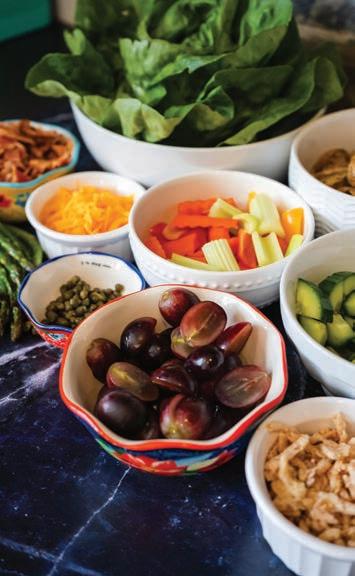

2/3 cup olive oil
1/3 cup red wine
vinegar
Fresh lemon juice
Salt and pepper
Pinch of dry mustard
Pinch of garlic powder
Blend and serve.



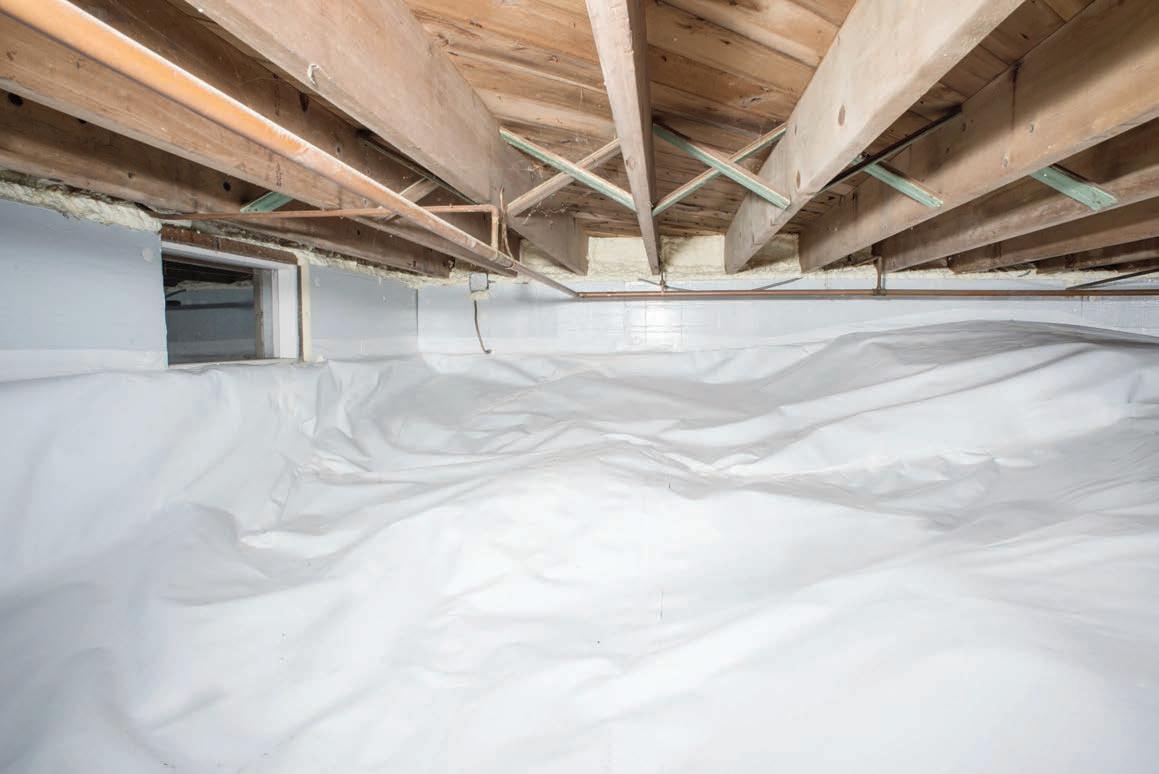







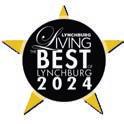

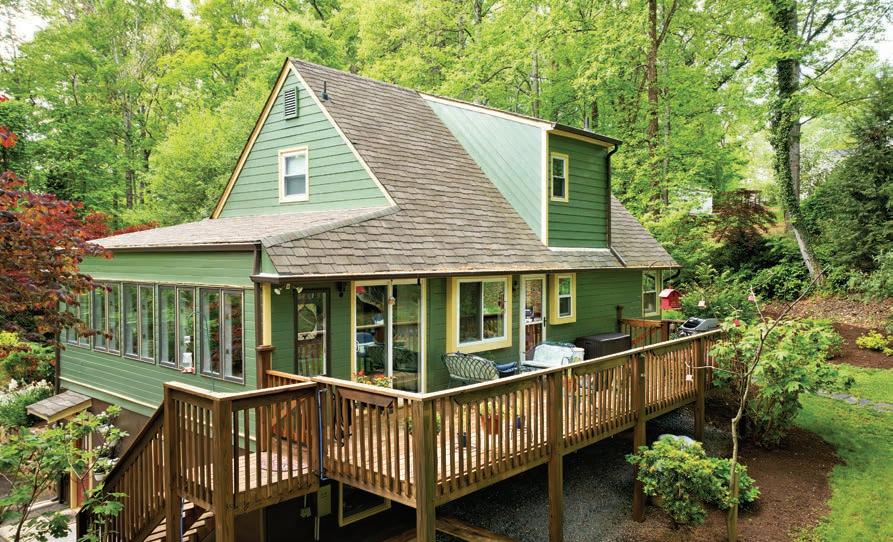
BY CARTER HEALD BENDALL • Photography by Michael Patch
Led to Lynchburg by job openings and a desire to share their faith, Toni and George Perry moved the day after Christmas in 2021. They bought their stone cottage in June 2022, after renting it as an Airbnb. As it had been a rental for years, the house needed some work, but the Perrys knew in their hearts this place was meant for them.
Toni and George first met at the Eiffel Tower — a yard-sized replica that George built in 2007 for Toni’s “Evening in Paris” party. Fast forward two years, and Toni needed another one for one of her retail clients. She called George, and at this second meeting, sparks flew. The city of love brought them together; they started dating and never looked back. The original Eiffel Tower replica now has a place of prominence in their yard, and throughout the house, references to Paris can be found.
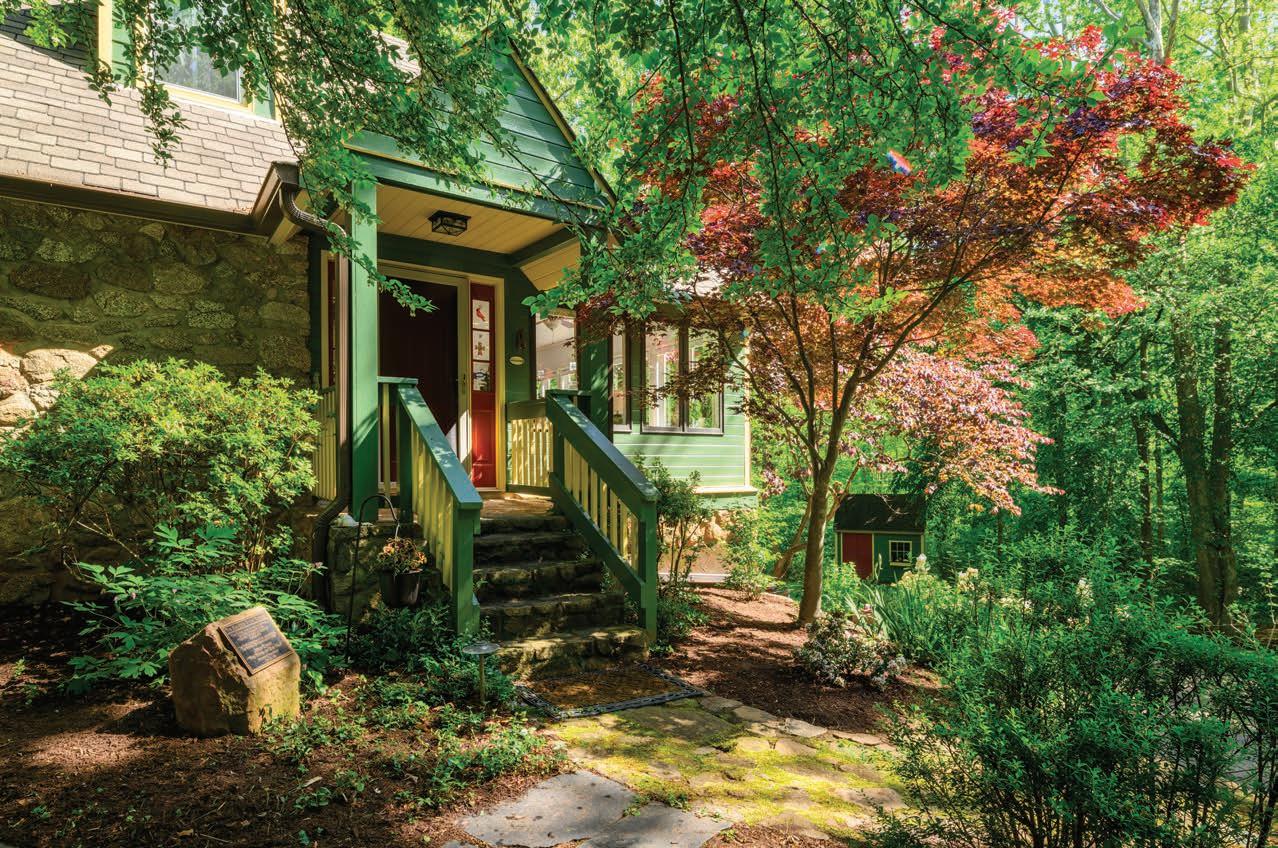

With her family hailing from Italy, Toni grew up in an environment where hospitality and food were important. Putting her upbringing into action, Toni worked as a professor of culinary arts, as well as in the fields of broadcast, journalism and event marketing. George has worked as a machine builder, with a penchant for building furniture and other items as well. Desiring a career change, in 2021, Toni came to Lynchburg to begin work as an instructor at Liberty University. She teaches digital media and journalism as well as apologetics for Liberty’s Rawlings School of Divinity. The Perrys have a deep faith and feel that God led them to each other and to the Lynchburg area.
Upon deciding to buy their stone home, the Perrys knew just what they wanted to name it: the “Ebenezer Stone Cottage.” Ebenezer is Hebrew for “stone of help.” Toni says, “This home is the biggest small cottage in all of Virginia, and God provided it.” The house sits in a wooded setting surrounded by greenstone paths and stone walls. An exceptional stone arch has been lovingly maintained and expanded.
Irises, peonies, lilies of the valley and Lenten roses are among the many perennials in the gardens. A sweet small front porch with a red door welcomes guests into the house. Accenting the green siding are splashes of cream and brick red, which helps the home blend into its natural setting. Stained glass accents hang around the front door and throughout the house.




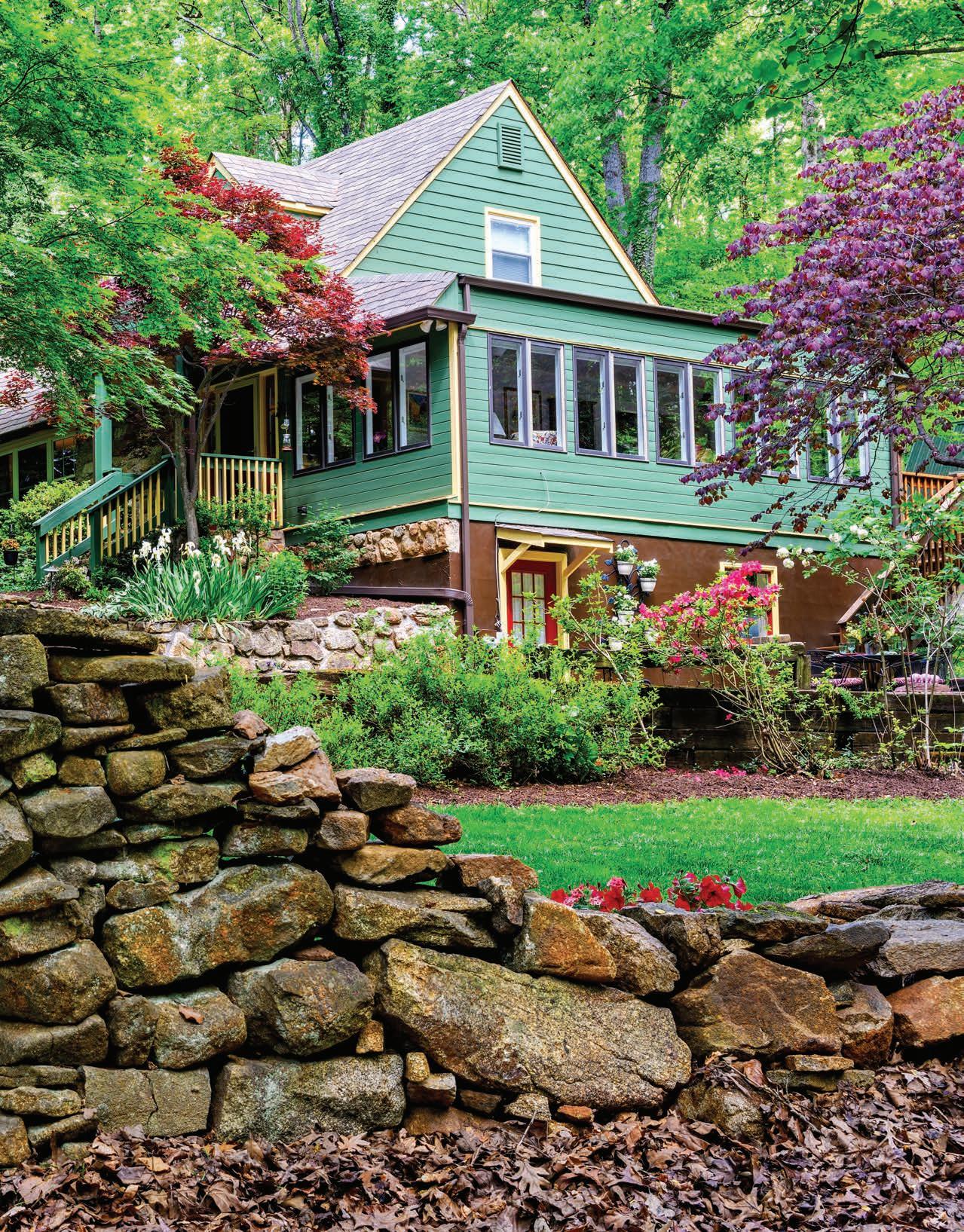

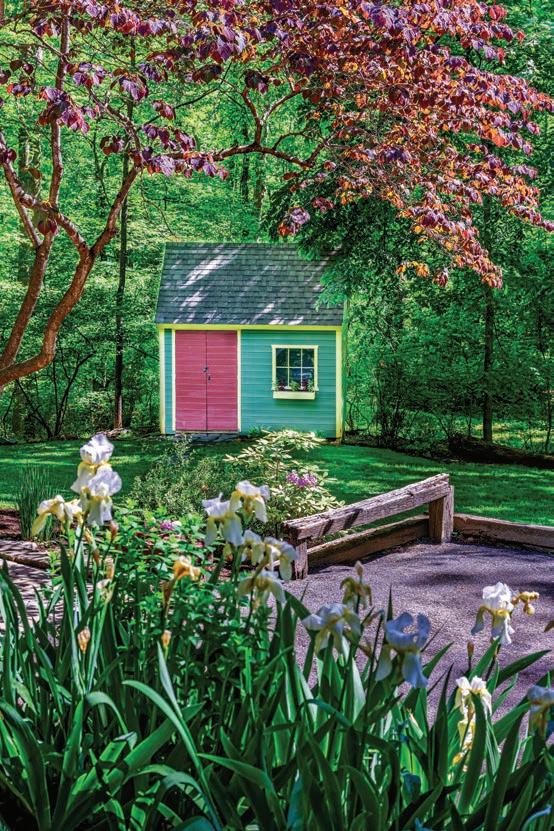

The tombstone of George’s great-great grandfather resides in the side yard. He was in the Grand Army of the Republic. Due to eroding letters, the original one was replaced by the U.S. government, and George was able to salvage it. It sits under
a lovely butterfly bush and near a sweet devotional garden dedicated to their dog Isabella. A deck runs along the back of the house, allowing the family to look out over all of the wooded gardens.



Moving inside, the kitchen is the heart of the home for the Perrys. For Toni, the culinary world is a passion, so the Perrys put extra thought into the kitchen. The late and renowned Loretta Carroll, who owned Fine Interior Painting, painted the kitchen a pale yellow. Red accents are found on the doors, cabinet pulls and small appliances. Stainless steel appliances are nestled into the white cabinets that sit atop a brown tile floor. Intricate brown-and-white granite countertops add texture to the space and blend the floor tiles with the cabinets. George used salvaged barn siding to create hanging pot storage on the walls. A small antique wooden table handmade in the 1800s in Arizona allows for eating in the kitchen.
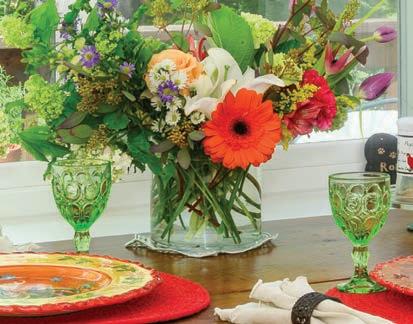

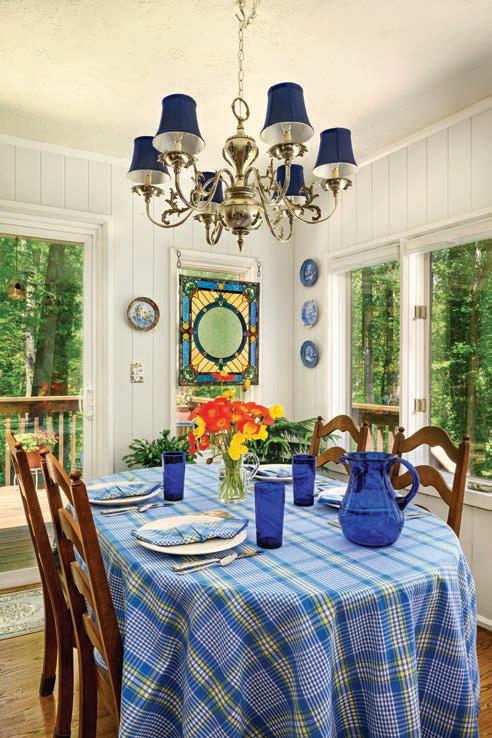
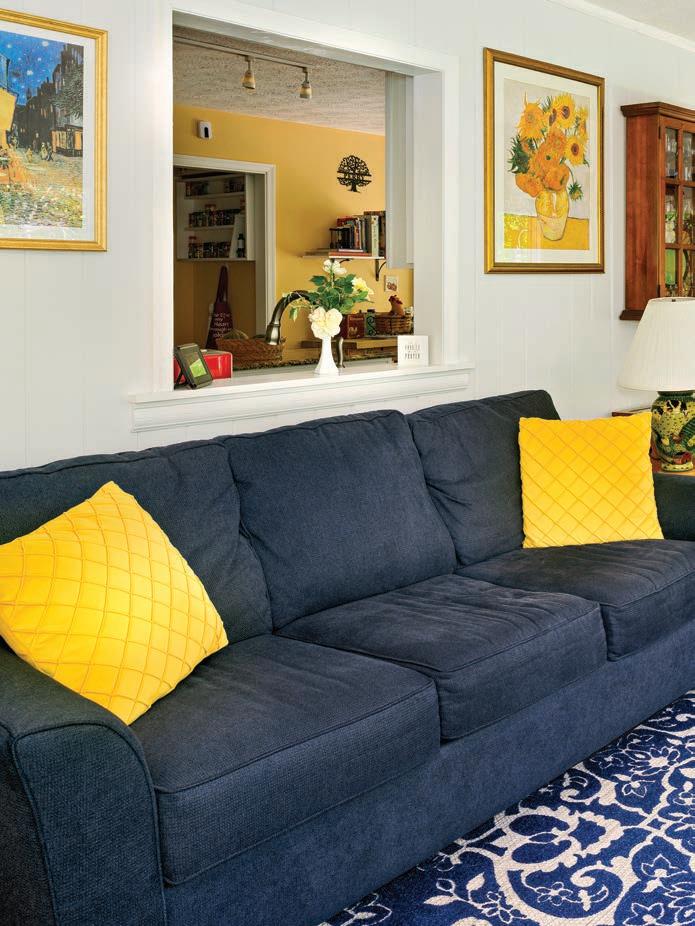
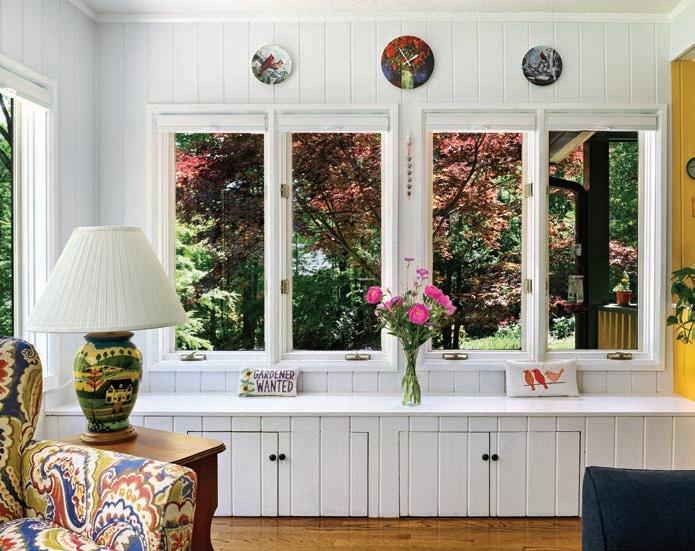
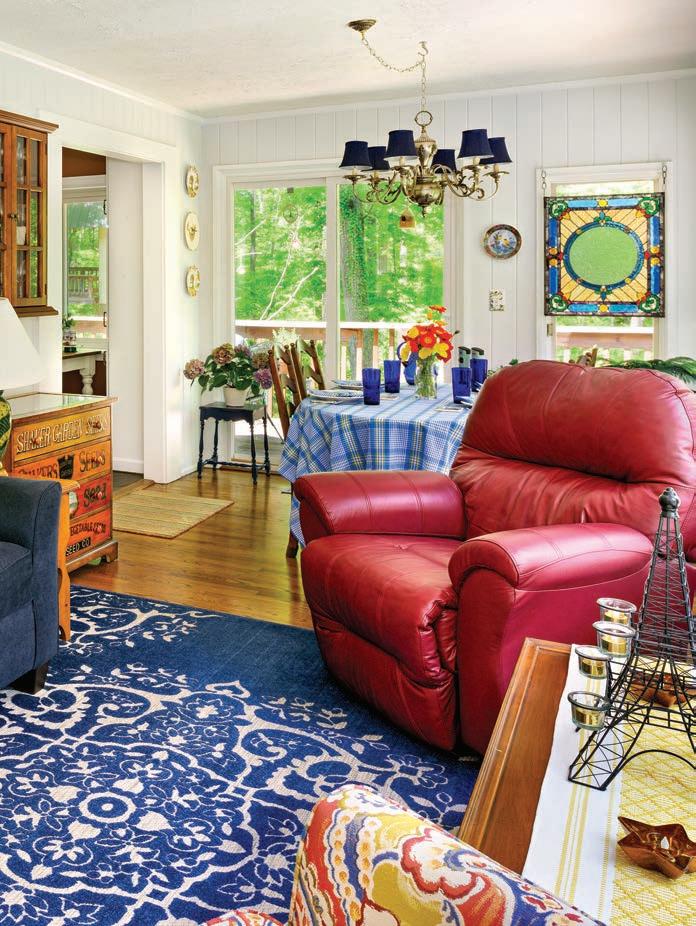

A light-filled sunroom flows off the kitchen, as windows cover three of the walls. The shared wall with the kitchen is covered in white beadboard and has a passthrough into the kitchen — remnants of what used to be an exterior window. A navy sofa with bright yellow accent pillows sits beneath the passthrough, facing the woods and gardens below. A red leather recliner and multicolor paisley club chair unite many of the colors found around the house.
The sunroom space is also used as a dining room. A blue-and-yellow plaid tablecloth pulls in the blue and yellow from the sofa and adds a softness to the space. A pewter chandelier hangs above the table with navy blue shades attached to it. Blue-and-white plates reside on the walls and indoor plants provide additional warmth. A unique antique cabinet with a glass-top case houses flatware and a collection of the Perrys’ favorite items. A variety of porcelain Limoge boxes and other assorted collections can be seen on display. Another favorite item in the case is a 1700s leather-bound dictionary of fables.

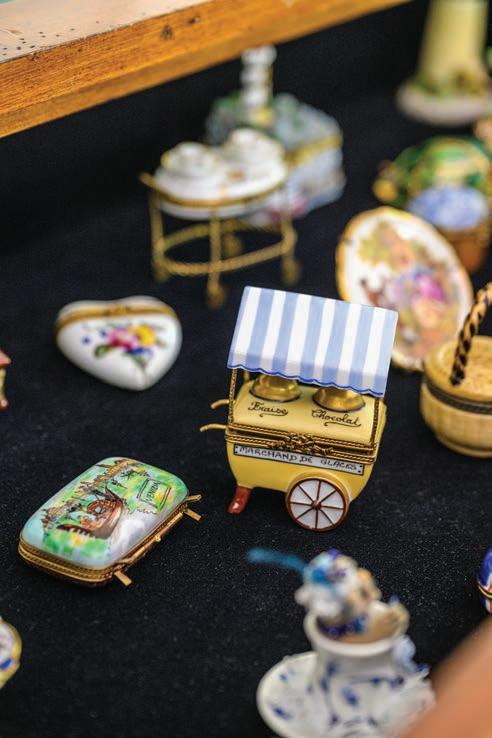

A living room and office reside along the left side of the house. George applied the wainscoting to the office, turning what was once an ordinary bedroom into a space more suited for Toni’s office use. He also transitioned an ordinary closet in the room into a pantry for storing grocery items and cleaning products. Coral walls provide a warm, cozy feel to the space. A Tiffany glass lamp situated in front of the windows overlooking the back deck bounces a prism of light around the room. Two smaller Tiffany lamps provide ample task lighting and a gorgeous rolltop desk serves as the actual workhorse for the room. An antique glass-front cabinet allows Toni to display her collections of vintage glassware, teddy bears and other figurines. Toni fell in love with Eze while living in France and has a map of the location displayed in her office.

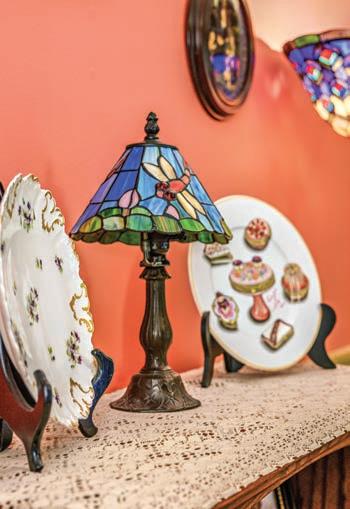
In the soft green living room, a stone fireplace is the star of the show. Bookcases flank either side of it allowing Toni to exhibit favorite items. Her most treasured item on the bookshelf is a wooden box filled with get-well cards and personal notes. These are heartfelt reminders of Toni’s leaning on her faith, friends and family during a recent battle with stage four bladder cancer.
A brown leather sofa, a white loveseat and a brown leather chair provide seating for the room with a metal, glass-top coffee table in between all of them. A pair of mirrors, which were repurposed by Lynchburg’s own CMW Inspired Furniture, hang behind the white sofa and were created from the backs of outdated elders’ chairs from Grace Church in New Jersey. Another favorite item in the room is a hanging wall clock that George’s dad made for him.



Bedrooms fill the upstairs of the house. A guest bedroom is painted a lovely shade of blue. All of the décor in the room corresponds to this, from the navy-and-white paisley bedspread to the area rug on the hardwood floors. White lace curtains provide privacy but let the light flow into the room at the same time. A glass window-turned-art piece hangs above a white dresser. It reads, “The Lord is in this place.” Toni purchased this at a consignment shop and adores it. In the hallway, artwork of Paris shops and an Eiffel Tower clock add to the French décor theme.
The bright and cheery yellow main bedroom features a cream matelassé and blue-and-yellow plaid curtains. A pair of oak side tables and two oak chests round out the storage in the room. A portrait of their beloved dog Isabella hangs on the wall. Numerous squirrel décor items are found around the whole house, but in this room in particular, as they are a favorite of the family.

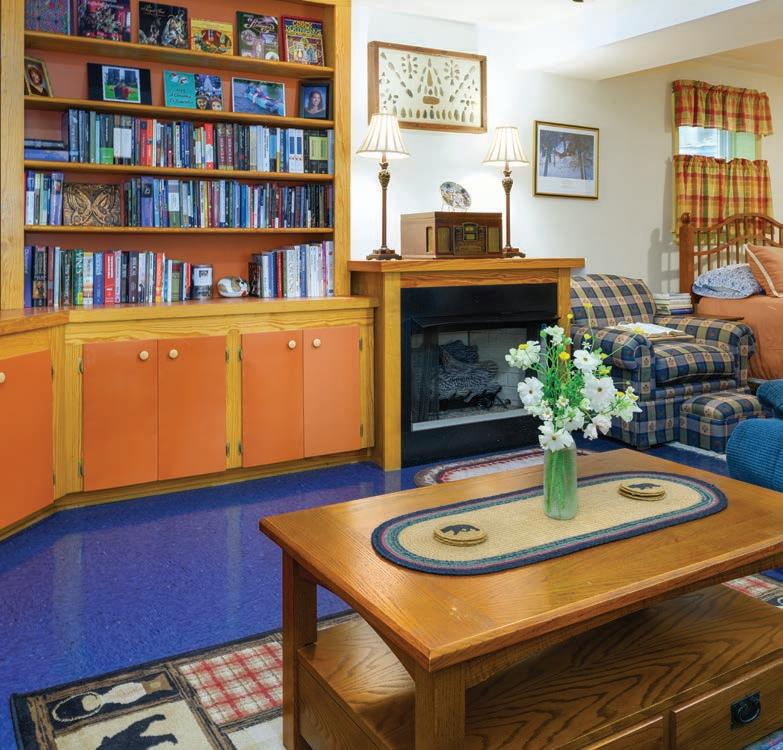


The Perrys have fully decorated the basement using furniture they brought with them from their New Jersey home. A second den provides another space to hang out with friends and family. Blue tile floors set the color scheme for the space. A cabinet system allows storage for photo albums, a display case for family pictures and books and houses the television. A gas fireplace warms the space, residing next to Toni’s prayer chair.
The basement also incorporates another bedroom, bathroom and a huge workshop for George. Family pictures line the walls, including a black-and-white photo of George’s grandmother in 1931 on her high school trip to Washington, D.C. Also included are photos of George’s great-grandfather, Toni’s grandfather and a personal memento. Brought together at a professional engagement, Toni and Howdy Doody’s Buffalo Bob became friends, and a signed etching by this famous TV icon now adorns her wall.
The Perrys’ cottage is full of love — for God, family, friends and pets. Thomas Jefferson once said, “A walk about Paris will provide lessons in history, beauty and in the point of life.” Any visit to the Perrys’ cottage, where the French influence is strongly felt, enumerates these things. History is honored, beauty is abounding and love for God is all around. ✦
Special thanks to David Heal of Lynchburg Leo
for providing the beautiful floral arrangements.
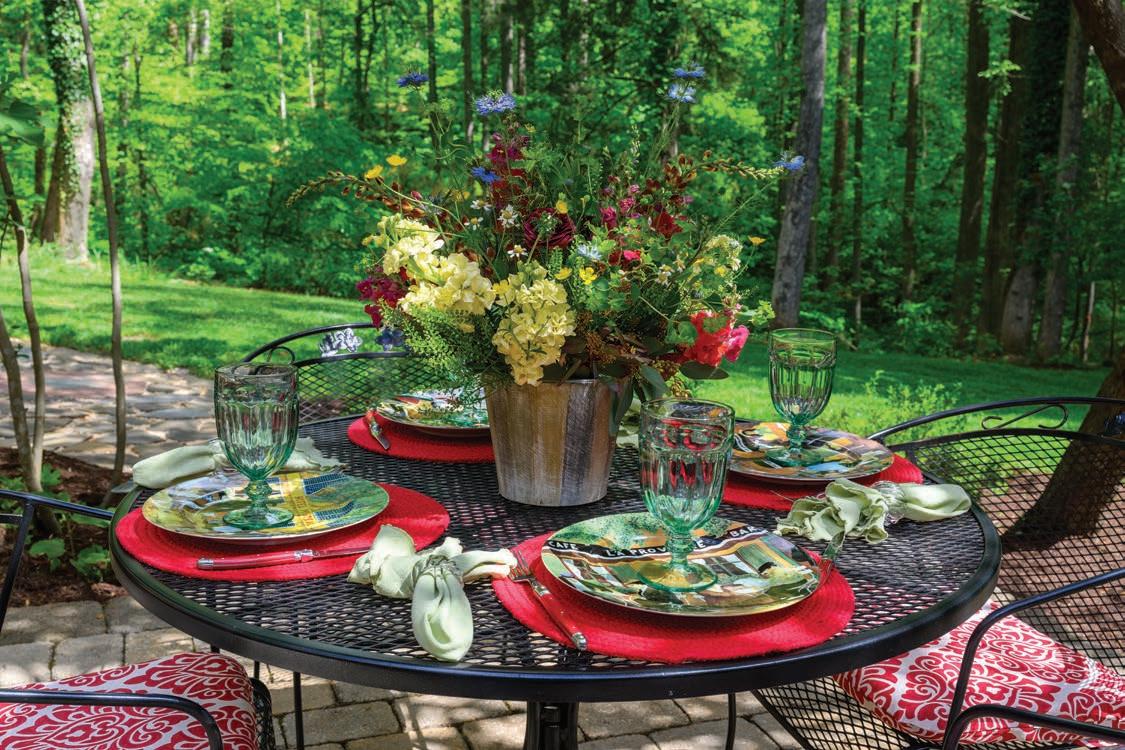
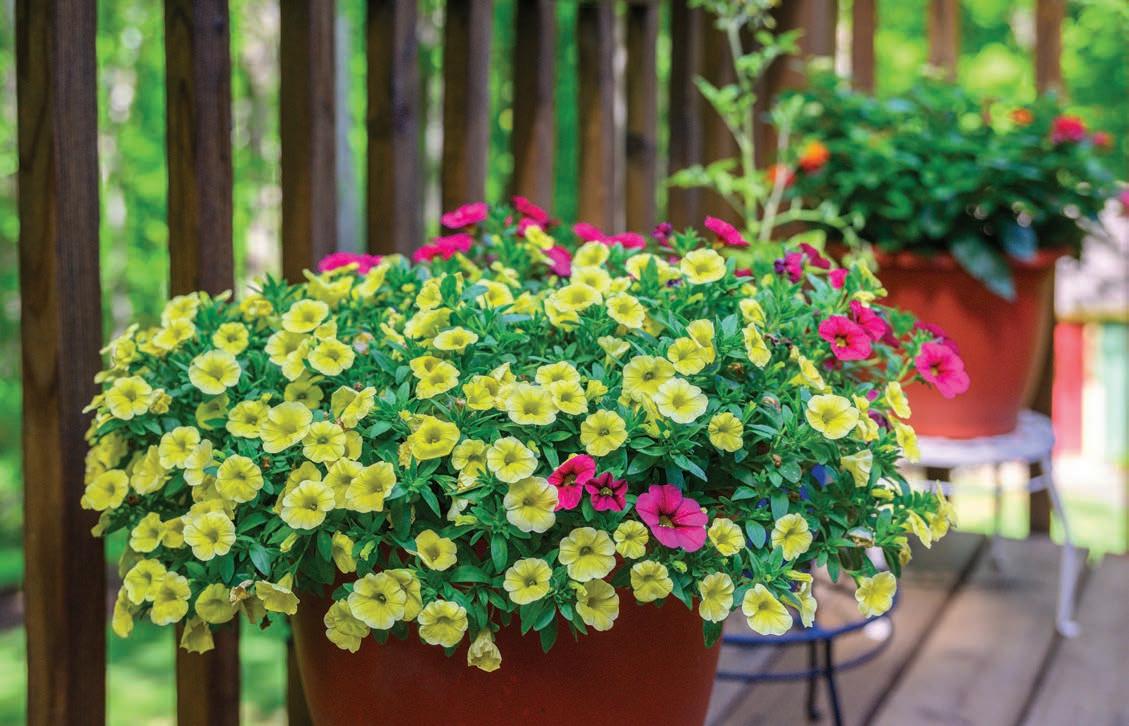

Since 1921, four generations of the Bass family have cultivated their Campbell County land, and today, Bass Sod Farm delivers premium turfgrass for residential and commercial clients. What began as 200 acres of farmland has grown to more than 2,100 acres, reflecting a century of dedication and innovation.
In 2005, Bass Sod Farm transitioned to sod production, and today produces 250 acres of Fescue, Bermuda and Zeon Zoysia. Walter Bass Jr. was recognized as the 2024 Sunbelt Farmer of the Year for Virginia. This award acknowledges excellence in farming across the Southeast. The Bass family’s entrepreneurial spirit and contributions to their community have earned them high regard.




A perfect, thick lawn, athletic field or golf green — instantly! The team at Bass Sod Farm, led by W.B. and Allen Bass:
■ Harvests sod to order — the rolled sod unfurls like a beautiful carpet on your lawn.
■ Ensures that you receive fresh, high-quality turfgrass.
■ Delivers to your location or schedules a pick-up time for you.
■ Installs the grass on your prepared yard.
■ Offers custom-blended bagged seed.
■ Grows sod sprigs in Bermuda and Zoysia grasses. These sprigs are thin 3- to 6-inch pieces of grass stems or runners without soil



BY CHRISTINA MOORE

As winter releases its grip and warmer days return, homeowners are preparing to wake up their lawns. Spring means longer days, blossoming landscapes and — let’s be honest — a lot of yard work. But this year’s innovations in lawn care technology are making yard maintenance smarter and more efficient than ever, whether you prefer traditional gas-powered equipment or the latest high-tech solutions.
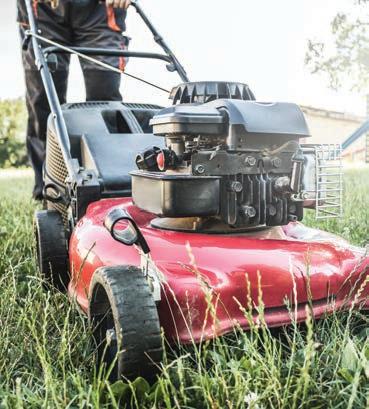

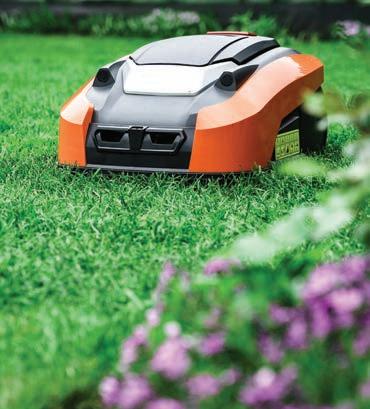
The biggest buzz in lawn care centers is around smart technology integration. Gas mowers are getting tech upgrades too; newer models from Honda and Toro feature electronic fuel injection (EFI) systems that improve fuel efficiency and provide easier starts in any weather. Some premium models now include built-in maintenance trackers that notify you when it’s time for oil changes or blade sharpening.
On the electric front, the latest lithium-ion mowers aren’t just about battery life anymore. New “smart mowing” features include automatic blade speed adjustment based on grass
thickness and height-sensing technology that maintains optimal cutting performance. Some models even connect to smartphone apps that track mowing patterns and suggest optimal schedules based on weather forecasts.
For those ready to fully automate, robotic mowers are becoming more sophisticated. The newest models use GPS and AI to map complex yards, navigate around obstacles and even identify and avoid small animals. While still an investment, prices are becoming more competitive as more manufacturers enter the market.



If you’re in the market for a new mower, these tips from Popular Mechanics can help guide your purchase:
n Push or riding mower? If your yard is more than a quarter acre in size, you probably want to shop for a riding mower. If you have more than 2 acres, you might want to consider a zero-turn model. If you have a small but hilly yard, a self-propelled mower can help you get the job done.
n Functions. Mowers can do more than cut grass. A two-function mower mulches and bags; a three-function machine bags, mulches and side discharges.
n Size of deck. A larger deck allows you to cut more grass at once. Usually, decks range from 42 to 54 inches. What size do you need? Divide the mower deck size by 12 to get an approximation of the acreage the mower can handle. For example, a mower with a 54-inch deck can mow up to 4.5 acres.
n Front, rear or allwheel drive. If you have level ground and a lot of obstacles, choose front-wheel drive. Rearwheel drive works best for uphill mowing and sidehill mowing. All-wheel drive is built for sidehill mowing, steep uphill and downhill mowing.



Precision tools
Today’s string trimmers and edgers are evolving beyond basic cutting tools. New gas-powered models feature computercontrolled engines that optimize fuel consumption and power output, while the latest battery-powered options use brushless motors with smart power management, automatically adjusting power based on the task. Multi-head systems are trending, where one power unit connects to various attachments, saving both storage space and money.
Perhaps the most exciting developments are in smart spraying systems for fertilizers and weed control. New precision sprayers use optical sensors to identify weed species and adjust application rates automatically, reducing chemical waste and improving effectiveness. Some models can even connect to soil moisture sensors to optimize treatment timing.
High-tech helpers
Lawn care is going high-tech with soil analysis tools that connect to your smartphone, providing instant readings of soil pH, moisture and nutrient levels. New aerators combine traditional tining with vibration technology for better soil penetration while requiring less effort.

For leaf cleanup, the latest blowers feature variable-speed triggers with cruise control and even noise-reducing technology that maintains power while cutting decibel levels.
Another emerging trend is the integration of tool tracking and management systems. Many new professional-grade tools come with builtin Bluetooth tracking, helping you monitor usage hours, maintenance schedules and even their location if misplaced.
When shopping for any lawn equipment, consider how these new features might benefit your specific situation. While smart technology can make lawn care easier, reliable power and performance should still be your primary concerns. Gas-powered tools continue to offer unmatched power and runtime, while electric options keep getting stronger and more capable.
Remember — whether you choose traditional equipment or the latest smart tools, quality matters most. Watch for end-of-season sales when retailers often discount both current models and last year’s technology. With the right combination of tools, you can create a beautiful, wellmaintained lawn while taking advantage of the features that make the most sense for your needs. Happy mowing! ✦


BY MITZI BIBLE
Are you still dreaming of a new kitchen? Preparing to send your child off to college or down the wedding aisle?
These are exciting things to look forward to, but they can also become stressful when you don’t know how you’re going to pay for such a major purchase all at once. If you have diligently built up equity in your home, you may be able to borrow cash against your home’s current value and quickly turn those dreams into reality.

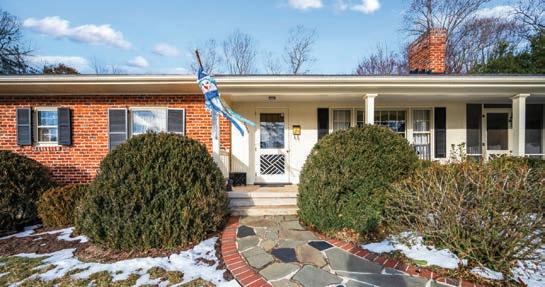
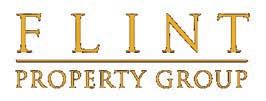

When you’re paying a mortgage, you’re building equity — that’s the value of your home minus the amount you still owe. The longer you chop away at debt, the more equity piles up. Lenders will lend you money based on that equity (if you meet certain requirements) in two ways: a home equity loan or a home equity line of credit (HELOC).
A home equity loan is paid back with interest at a fixed rate with fixed payments based on the length of the term, which is usually much longer than most personal loans offer, even up to 30 years. A HELOC functions much like a credit card. The interest rate is often variable (though typically much lower than other credit options), and customers are charged only for the funds that are used.
“For most Americans, the largest asset they have is their home,” says Raf Hurt, Branch Manager for Member One. “Our home equity lines of credit or home equity loans are the best tools we have available for members to tap into that asset and receive a low rate.”
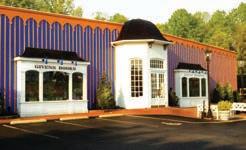

Hurt says Member One, with branches throughout the Roanoke Valley and Central Virginia, saw an increase in applications for its home equity products last year.
“We are still seeing a lot of interest in those products … toward renovating their homes, consolidating debt, paying for children’s education, maybe a wedding or once-ina-lifetime vacation or starting a business. It can be anything.”



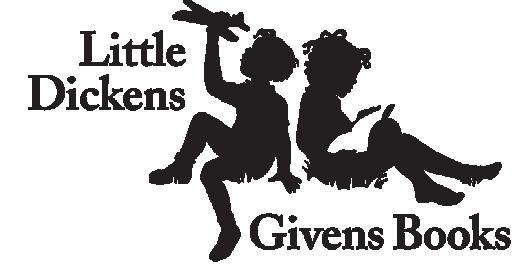
Obtaining a home equity loan or HELOC is similar to applying for a mortgage, with a full assessment of your financial situation, credit score, income, appraisal, etc., before the loan or line of credit is official at closing. The typical amount lenders will approve is 80 percent of the value of your home (or more with institutional promotions and depending on the term of the loan) less the debt you still owe against it. For example, if your home is appraised at $200,000 and you have $100,000 left on your mortgage, 80 percent of $200,000 is $160,000, then subtract the $100,000 you owe, and you could receive a loan or credit limit of $60,000.


Which option is best?
Courtney Glass, Senior Vice President & Senior Consumer Lender for Bank of the James, says her branches are seeing more customers apply for HELOCs, and specifically for the purpose of home renovations: bath and kitchen upgrades, finishing a basement or even in anticipation of putting the home on the market. They’re also using them for peace of mind, knowing they have a way to take care of immediate needs when they arise.
“People just want home equity lines of credit in place for anything major that may happen. As homeowners, we all know when something goes bad, like a heat pump, that’s not cheap. And you don’t have a lot of time — you want that in as soon as possible. … Plumbing issues, too. Whatever it is, a [HELOC] is there for a safety net; I always call it that spare tire in the trunk. It’s there for you to use whenever you need it.”
For some people, Glass says a home equity loan can be a way to consolidate credit card debt and finally see the light at the end of a long tunnel.


People have also used HELOCs as “bridge loans” when they don’t have a mortgage on their home and want to make a down payment on a new home; the line will be paid off once they sell the old home. If you’re looking at purchasing an additional home or investment property, a HELOC can also be more attractive than a first mortgage.
HELOCs generally come with much lower closing costs than a loan, and some banks will offer money toward those costs (Bank of the James gives a $1,000 credit, which for many people is enough to cover the full amount).
The HELOC is also helpful if you have more than one home project in mind. Hurt says people may tackle their kitchen first and take time to pay down that balance on a HELOC and then in a year’s time start on a bath remodel and draw on the revolving credit.
Glass says she cautions homeowners to plan ahead, because these financing options cannot be done if the project is already underway. She has had customers who have torn out a kitchen and then their funds ran dry because the price of materials went up or they decided to make a change that puts the project well above the original quote. Glass says an appraisal cannot be completed at that point (when a kitchen


doesn’t function as a kitchen) and your home equity financing options are jeopardized.
When shopping for home equity products, be sure to ask for special offers and inquire with your tax advisor because some options can potentially reduce your tax liability. Also remember that these options are still secured loans, which means the lender uses the part of your home that you own as collateral, and if you can’t pay it back, you risk going into foreclosure.
While information on these options and even applications are available online, area lenders still open their doors to customers every day.
“We like to invite you in for a consultation to understand what you’re trying to do so we can better advise you on what might be a better route to take,” Hurt says.
Glass adds, “We cater to our community in that we don’t have a one-size-fits-all strategy with what products we can offer; we really base it on each borrower’s specific need.
Everyone doesn’t fit in a small little box. I love it that we’re able to always speak directly with the borrower to see exactly what their short-term/long-term goals are for financing.” ✦
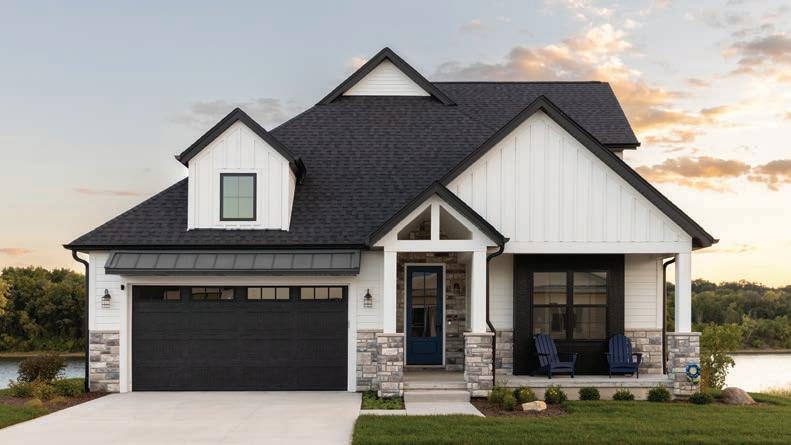
HOME Magazine and WLNI Radio help your messages reach consumers ready for your products and services. In the fall of 2024, Eastlan Ratings sampled area residents ages 35+ and found HOME and WLNI to “significantly outperform” the local media market in audience quality and purchasing influence.
90,000+
NUMBER OF HOME MAGAZINE READERS PER ISSUE
26,000
NUMBER OF WLNI RADIO LISTENERS WEEKLY
AUDIENCE PREFERENCES & PLANS
AUDIENCE INTERACTION WITH JRM HOMEOWNERS
“There is no doubt in my mind that the combination of radio and magazine exposure from James River Media has improved my business.”
— Mark Dalton, GM/VP Terry Auto Group



We don’t reach just any audience — we connect with your best customers. Let us help your business soar in 2025!
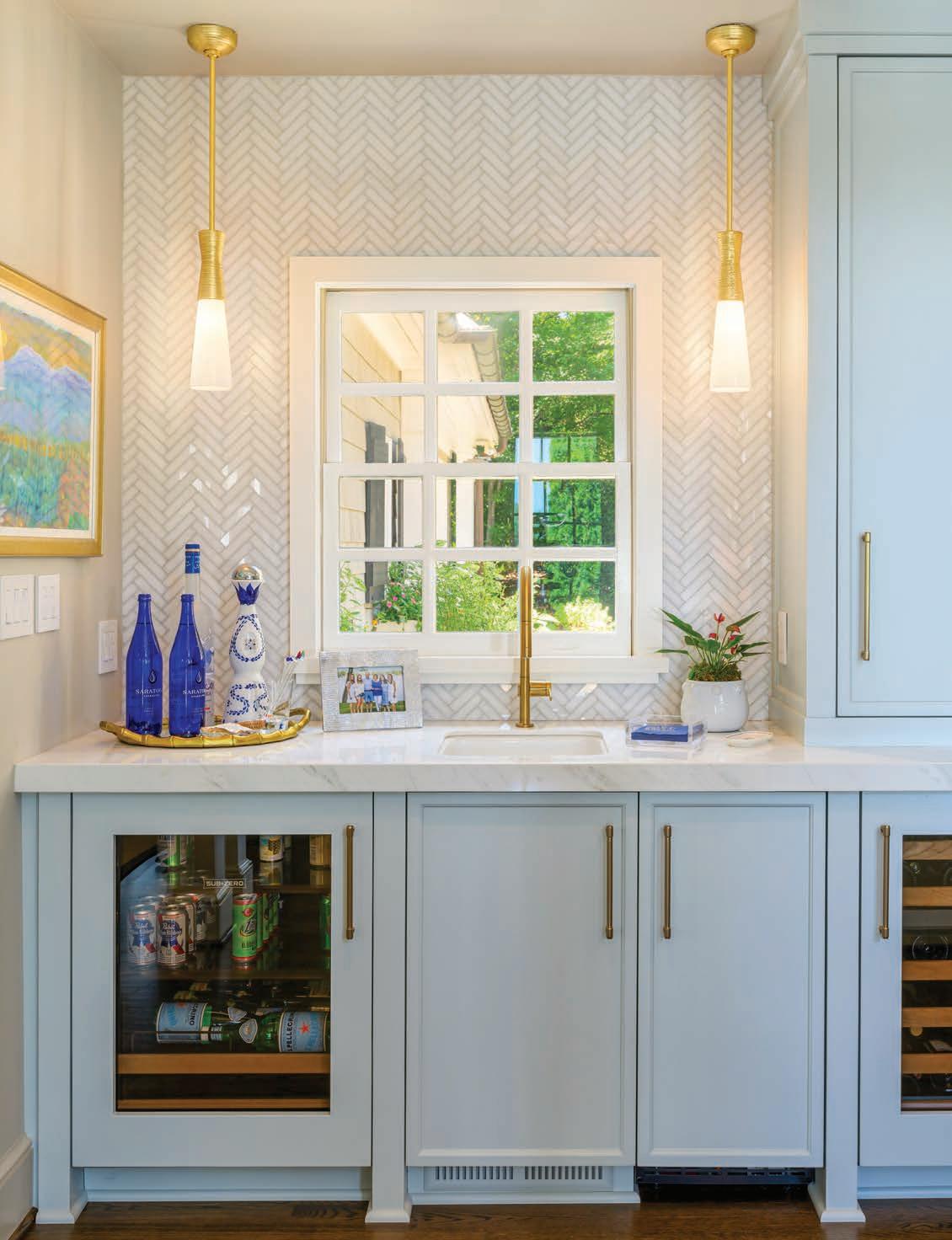
BY PAULA PETERS CHAMBERS
During social events, guests love to hover around the food and drinks. Savvy hosts know that it’s wise to separate snacks from libations to encourage mingling and to make it easier for everyone to reach whatever they’re looking for — whether that be another canapé or a refill of their preferred beverage.
If you’re looking for a permanent home for beverages, a bar cart or liquor cabinet will gather bottles, mixers, bar tools, an ice bucket and glassware in whatever space is most often used for parties. But if you really want to up your hosting game, add a built-in wet bar that can handle both casual and fancy drink service. With thoughtful planning, you can serve all your guests — whether they want soda or something with a little kick — and your workspace can double as an attractive focal point for the room.
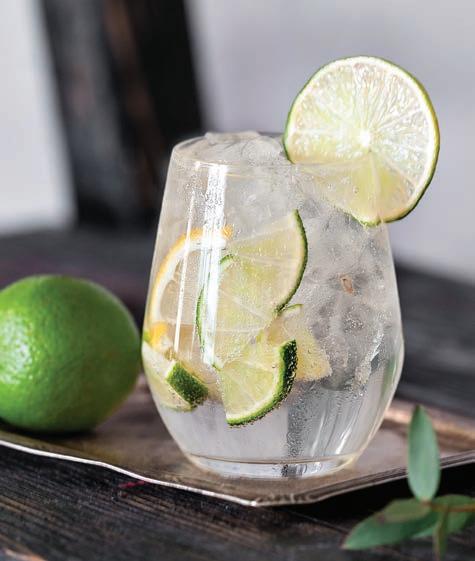











By definition, a wet bar has running water. While a bar sink is considerably smaller than what’s typically found in a kitchen, this little sink – 12"-18" wide and no more than 7"-8" deep — is incredibly practical. Filled with ice, the sink serves as a makeshift Champagne bucket. Or it functions traditionally, as a place to dump half-melted ice, wet a towel to manage a spill, and wash mixers and shakers. If you have the space, consider adding a small dishwasher, and you won’t even have to carry glasses elsewhere for proper cleaning.
Built-in wet bars also have refrigerators. Again, if space allows — and you’re a proud oenophile — incorporate a wine chiller alongside the traditional unit. Ideally, wines should be kept at 50-59 degrees for short-term storage and 53-57 degrees for long-term storage. By contrast, the refrigerator holding bottles and cans of beer, soda and seltzer should be below 40 degrees.
Other options, depending on priorities, include an icemaker (separate from the refrigerator) and beer on tap. The icemaker eliminates running back and forth to the kitchen freezer and ensures there’s plenty of ice available throughout the party. Beer on tap is somewhat more involved, as the counter will need to accommodate the taps and a drip tray. Underneath, you’ll need ample room for the canisters and lines, which require periodic removal and cleaning.
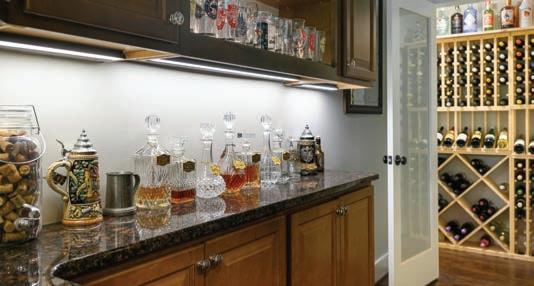
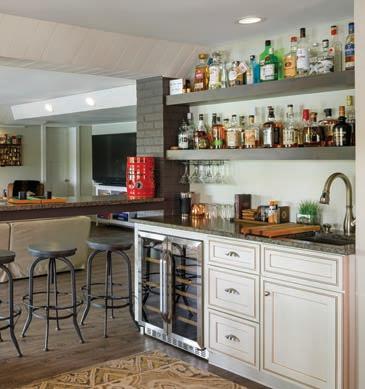

Looking beyond the “wet” aspect of the bar, countertop, backsplash, shelving and cabinets are also an integral part of the design. Think about the countertop material: it can be simple butcher block, which is useful when slicing fruit for garnishes, or it can be tile, granite, marble, stainless steel or even poured concrete. Consider a dramatic — or high-end — counter material, as not much is needed.
To plan shelving and cabinets, ponder what you want to contain or display. Open shelving is useful for fancy glassware and serving pieces. Some wet bars have shelves designed specifically to display a wine collection. And some hosts want to keep their liquor bottles within easy reach, which makes serving easier.

Meet Dr. Ryan!
Dr. Lora Ryan graduated from Texas A & M in 1998 and has practiced medicine ever since. She opened Riverside Veterinary Hospital in 2006 with the goal of providing the best pet care for Goode, Lynchburg and Bedford. Riverside has become an award-winning full service Veterinary Hospital. Services include wellness and sick pet exams, vaccinations, surgeries and so much more. We know selecting a veterinarian is no small decision and thank you for choosing us as your pet care partner! Named Bedford’s Best Vet in theBulletinBedford
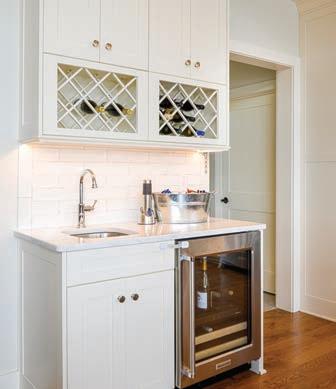
Before fixing shelves in place, measure the height of the tallest bottle currently in your liquor cabinet and make sure there’s a place where that bottle will fit. Also consider adding a lock to the cabinet or shelves where alcohol is stored. Today’s toddlers are tomorrow’s teens, so plan accordingly.
Lighting comes next. Under-shelf lighting provides ambiance and the right amount of glow, while brighter task lights are essential for crafting that perfect beverage. Depending on the moment, the bar can become a welcoming focal point, with lighting to draw a visitors’ eyes, or blending seamlessly into the overall ambiance of the surrounding room. It’s always possible to add lighting later, but electrical work is more easily done during the construction phase.



If a built-in wet bar sounds like a miniature second kitchen, that’s because it is. Just as in your main kitchen, a wet bar involves plumbing, electrical and carpentry. Unless you have the skill set to safely install what’s needed, call a professional. Because a wet bar is a relatively small project, a handyman — rather than a large home renovation firm — can likely handle the task. Always check to ensure your contractor is bonded and insured.
The person you hire should know if your locality requires a work permit for this type of project, but it’s wise to contact your
local building department just to be certain. Usually, permits are required for projects that involve adding or removing walls or other structural elements of a home. Adding cabinets, electrical outlets and plumbing likely isn’t sufficient to warrant a permit, but it’s always better to check before work begins.
A wet bar might not increase your home’s value enough for it to be considered a high return on investment, but it’s an opportunity to add more personality to your living space. Cheers to your wet bar and to time with friends and family! ✦
BY LAUREL FEINMAN

What to do with good stuff you no longer want or need
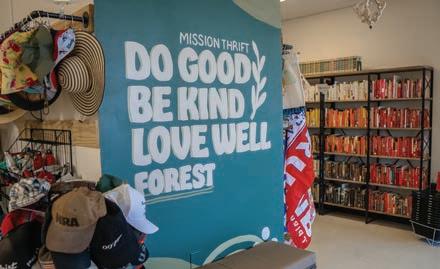

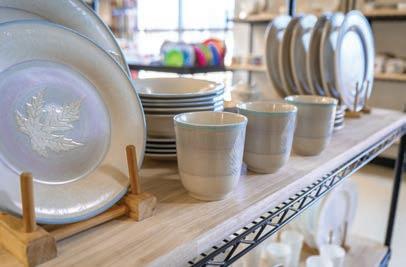

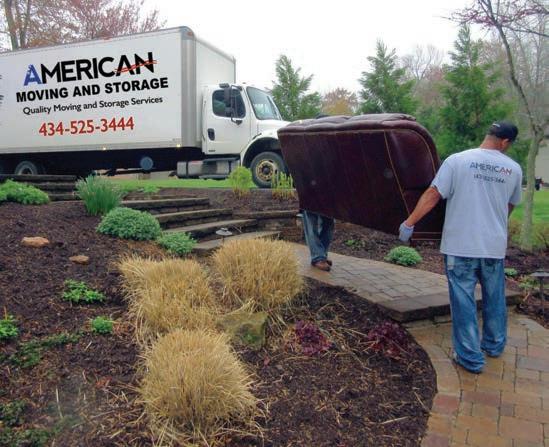




It’s a good problem to have: too much stuff. Decluttering not only clears your space but also offers an opportunity to give back to the community. By rehoming items that no longer suit your life, you extend a helping hand, fostering a sense of community and sustainability. This guide will walk you through the best practices for donating your items to charity thrift shops and relief organizations, ensuring your contributions positively impact your community.
Criteria for donating items
Before donating, keep these criteria in mind to ensure your items are accepted:
n Clean: Items should be free of dirt, stains and odors.
n Functional: Appliances and electronics must work properly and include all necessary parts.
n Whole: Items should not be broken, damaged or missing significant pieces.
n In style: Thrift shops often prefer current styles (less than two years old), especially for clothing.
n In season: Donate items appropriate for the season to help shops manage their inventory effectively.
Quick tip: If you’re donating any breakable items, be sure to label the box as fragile. Use bubble wrap and paper to keep items safe and to protect those who will be sorting donations.
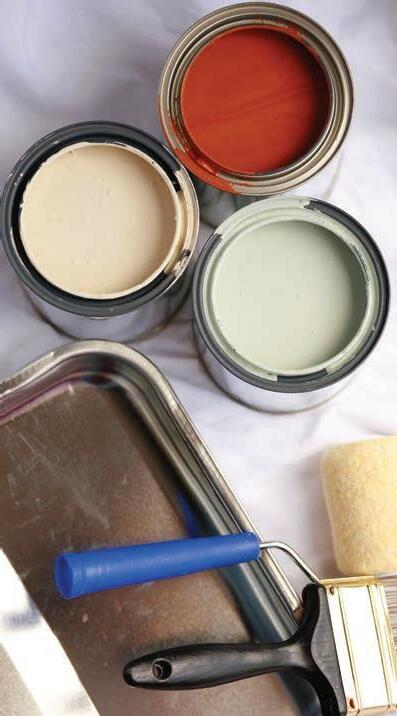

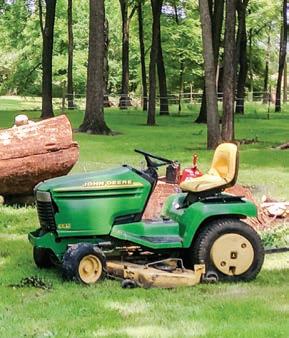
Many thrift shops do not accept certain items, including:
n Open/used personal care items: Cosmetics and fragrances are typically rejected for health reasons.
n Outdated electronics: Non-functioning or obsolete items should be recycled instead.
n Often-recalled items: Most donation centers do not accept children’s cribs, strollers, car seats and other infant furniture.
n Furniture with structural issues: Broken or unsafe furniture is often not accepted.
n Hazardous materials: Items like paint or sharp objects are typically refused.
n Kerosene and gas heaters
n Mattresses and bed pillows: Hygiene concerns usually prevent their acceptance.
n Large appliances: Some shops cannot accommodate large items; call ahead to check.
n Lawn equipment
n Guns and weapons





Impact of charity thrift stores
Charity thrift stores support a variety of causes, including:
n Job training and employment: Organizations like Goodwill offer job training and placement services.
n Homelessness and housing: The Salvation Army and Habitat for Humanity help fund housing support programs.
n Health and wellness: Some stores support medical research and community health initiatives.
n Youth and education: Many charities fund educational programs for at-risk youth.
n Animal welfare: Thrift stores run by animal shelters raise funds for animal care.

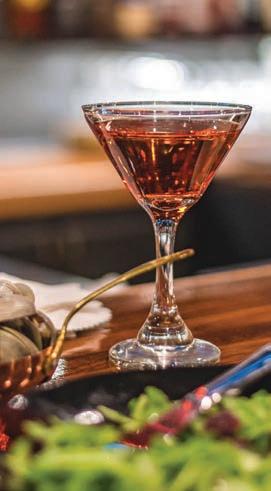
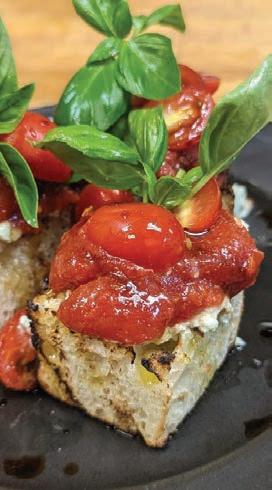
n Disaster relief: Some stores contribute to emergency relief efforts.
These charities rely on donations and profits from their thrift stores to sustain essential services, making your donations a meaningful way to support community initiatives.
Shopping at thrift shops and nonprofits has become an increasingly popular way to promote sustainability. See our article on budget-friendly design sourcing on page 37. Recycling gently used home goods, clothing and shoes cuts down on waste in landfills and gives these materials a second life. And bonus — you can save a little money for higher quality new purchases.




Here are some options for donating your items:
n Goodwill and Salvation Army: Accept in-season clothing, household goods and furniture in good condition.
n Habitat for Humanity Re-Store: Welcomes home improvement materials and working appliances.
n Local shelters: Accept clothing, unopened hygiene products and bedding.
n Charity thrift shops: Prefer in-season items to help manage inventory.
At Dynamic Promo Solutions, we pride ourselves on exceptional communication, fast turnaround times, and high-quality products. Whether you’re a small business, a large corporation, or a major university, we offer personalized service and expert solutions tailored to your unique needs. We take the time to truly understand your goals and provide custom support every step of the way, going the distance to set ourselves apart from the competition. With upfront pricing, no hidden charges, and FREE web stores for easy merchandise and fundraiser management, we ensure your projects run smoothly. Let us show you how our personal service, commitment to quality and efficiency can elevate your next promotion. Contact us today to experience the DPS Difference!

n Libraries, community centers and schools: Call ahead to see if they accept donations.
n Online platforms: Freecycle, Facebook Marketplace and others allow you to give items away locally.
n Curb donations: Leave items on the curb with a “FREE” sign.
Before leaving any items, double-check them to ensure you haven’t left behind valuables like jewelry or important documents.













We live in a generous-minded, supportive community with many avenues to provide gently-loved goods to those in need. Here is a list of popular charity thrift shops in the Lynchburg area:
Agape Center Lynchburg: Accepts clothing, hygiene items, housewares, food and furniture (3026 Carroll Avenue)
Blue Ridge Area Food Bank: Donations of food and kitchen supplies (501B 12th Street)
Daily Bread’s Little Free Pantry: For small food donations (721 Clay Street)
Dave’s Squeaky Wheel: Donate old bikes for their bike ministry (1310 Church Street)
Goodwill Store & Donation Center: Multiple locations; search online for the closest center.
Habitat Re-Store: Accepts a wide range of home improvement items (360 Alleghany Avenue)
Mission Thrift: Supports other area nonprofits (2303 Bedford Avenue and 18366 Forest Road)
n Parkview Community Mission’s Clothing Connection: Offers clothes free of charge (2323 Memorial Avenue, Suite 28)
In summary, rehoming your gently used items not only helps declutter your home but also plays a vital role in supporting community organizations and charitable causes. By donating clean, functional and seasonally appropriate items, you ensure that your contributions make a meaningful difference to those in need. Embrace the opportunity to give back, knowing that your thoughtful donations can positively impact lives within your community. ✦

Don’t miss these LOCAL shows:

Weekdays 6-9 am
“If you’re talking about it, we’re talking about it!” is the motto of this award-winning local morning show. Veteran hosts Mari White, Brian Weigand and producer Anthony “Biscuit” McAvoy, talk to local newsmakers about current issues and activities in our community. The Morningline provides an informative and entertaining start to your day!

Presented by Piedmont Floor Show
Saturdays 9-10 am, Sundays 12-1 pm
The HOME Show highlights the best of HOME magazine with an extra dose of warmth and fun! Join Editor Donna Dunn, Publisher Trish Roth, Art Director Kira Rider and Producer Ashley Schamerhorn as they delve into all things HOME: Design, Improve, Garden and Live.
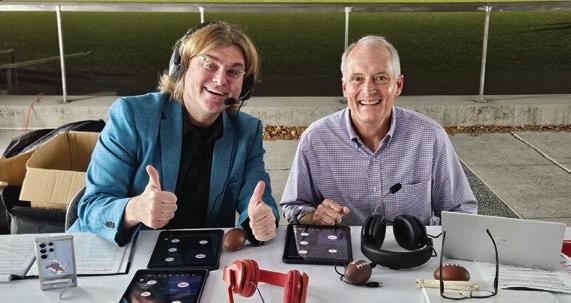
Weeknights 6-7 pm
Virginia Sports Hall of Fame broadcaster Dennis Carter leads this show focusing on local high school and college sports programs. Dennis highlights the area athletes, coaches and teams using a personal touch that has made him one of the most trusted voices in local sports. Veteran broadcaster Jamie Hall and other guests keep Dennis “Company” for extra insight and perspective. If you love ACC and some NASCAR to boot, give a listen to Carter & Company!

Sponsored by Bank of the James
Fridays 12-1 pm, Saturdays 7-8 am
This one-hour weekly show celebrates what makes Lynchburg such a great place to live, work and play! Host Mari White and producer Anthony “Biscuit” McAvoy talk to local influencers about the best people, places and things that make us proud to call the Hill City home.
How to listen: On the radio: 105.9FM, at WLNI.com or on the WLNI app. Podcasts: WLNI.com, Spotify, Apple Podcast and Amazon Podcast pages. wlni.com | 434-846-8255 (TALK)
INFORMATION PROVIDED BY THE GARDEN CLUB OF VIRGINIA
Historic Garden Week 2025 in Lynchburg gives visitors access to four private homes and gardens, showcasing the Rivermont Historic District and Camp Kum-Ba-Yah Nature Center. A treat of old-world charm mixed with new conservation and horticultural practices, the tour offers visitors a variety of architectural and landscape styles.
Sue Ott Rowland, 11th president of Randolph College
This Georgian Revival mansion has housed the presidents of Randolph College ever since its purchase in 1983. Lynchburg architect Pendleton S. Clark designed the home inspired by Tidewater plantation homes. The hipped, slate roof is set off by dormers, and the home is anchored by two formidable chimneys. Hallmarks of the home’s craftsmanship include bay windows flanked by ornate, custom crown moulding and wainscoting. During Historic Garden Week 2025, art students of Randolph College will share selections from the college’s art collection; the complete collection resides at the Maier Museum. The park-like gardens surrounding the home were designed when the home was built in 1932 and are filled with peonies and grandiflora magnolia trees.
RIVERMONT
Owners: Betsy and Jeb Burton
This two-story, five-bay brick Colonial was meticulously crafted in 1941 and boasts classic design elements, generous living areas and a newly renovated modern kitchen. Listed on the National Register of Historic Places, it has a Doric entrance to welcome guests into a foyer, which features a stairwell lined with generations of family portraits. A 6-foot, detailed replica of the U.S. Capitol hangs in the living room, anchoring the space. Built by a Shenandoah craftsman and restored by Mr. Burton’s father, it is more than 100 years old. Art brightens the rooms, and the owners’ interests in history and nature enliven the spaces. In the back, a slate terrace provides a place to lounge and view the garden, a serpentine brick wall, an arched fountain and generous planting beds of various plants, such as boxwoods and hydrangeas.
Owner: George Vermilya
A Federal-style brick home with an American foursquare design, this was constructed in 1931 for Randolph and Glenna Myers, remaining in their ownership until 1987. The character and architectural integrity of the home have been carefully maintained as the Vermilyas have updated it. The den has been enlarged, a sunroom was added in 1996, the upstairs was renovated in 2000, the kitchen was remodeled in 2018 and the upstairs bedrooms were redecorated in 2020 in a classic style. The interior contains antique furniture, rugs, porcelain, silver and art. The English cottage-style garden features a collection of David Austin English roses with a variety of perennials and shrubs that produce blooms from early spring until frost.
LYNCHBURG TOUR
Tuesday, April 29, 2025 10 am to 5 pm


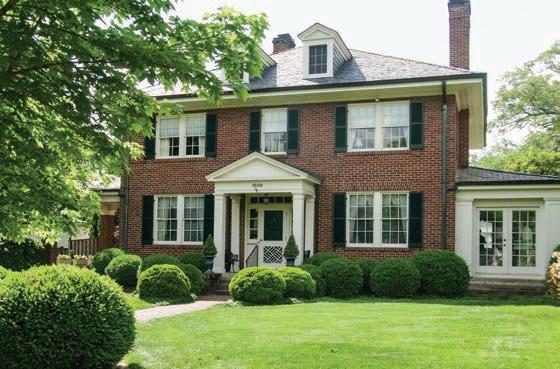
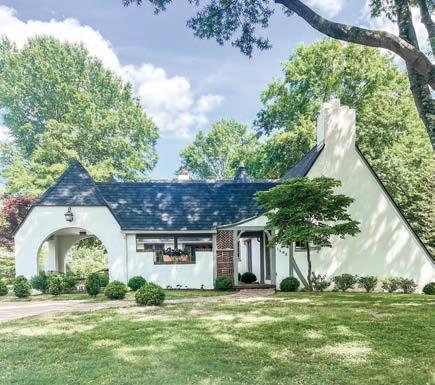
Owners: Torii and David Jones
Tickets are available online: $50 in advance; $60 day of; $15 single-site (sold at properties). Boxed lunches are available for pre-order. Note: This is a park-and-walk tour; walking shoes are recommended. For tickets and more information, visit vagardenweek.org.
A restored French Provincial home in Boonsboro built in 1929 remained in the Ivey family until 2021. The current owners undertook a complete renovation, going to great lengths to keep the home historically intact. The home features the original turret and courtyard, arched doorways and wideplank floors. It also includes many modern amenities in its remodeled kitchen and baths. The living space is airy and open, with a vaulted ceiling, containing many pieces of art by Mrs. Jones’ mother and other local artists.


Nestled in a 47-acre urban forest with 42 acres in a conservation easement, CKBY Nature Center is a naturalized play and educational space for public enjoyment. It was organized in 1950, evolving to have various activities such as gardening and hiking. This year, the camp added Addison’s Amphitheater, which serves a variety of uses, from an outdoor classroom space to a wedding venue. Blue Ridge Conservation will supply information, while local vendors will have plants and products for sale. Children’s activities from 4-5 pm will include flower arranging and cookie decorating. ✦

